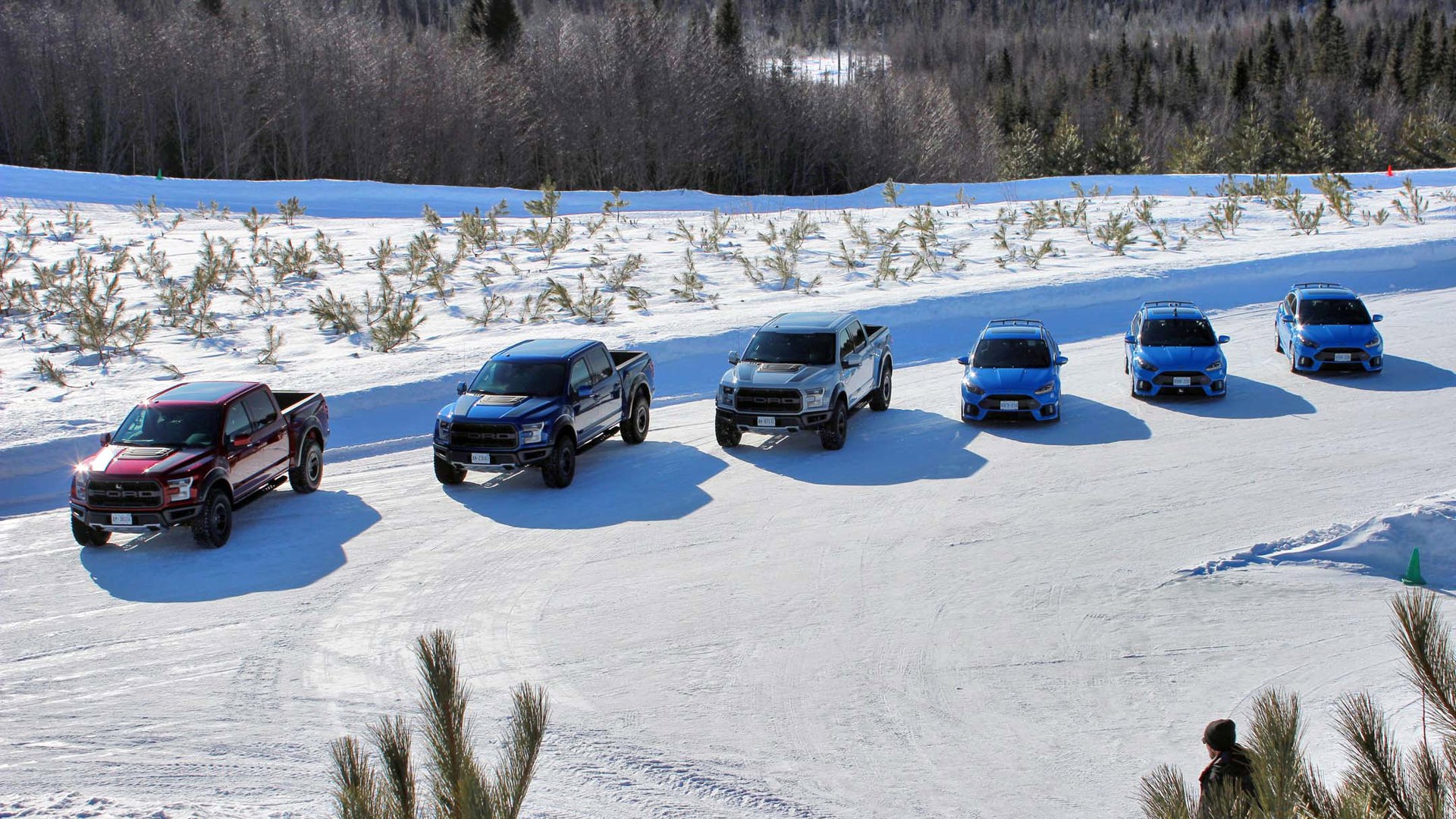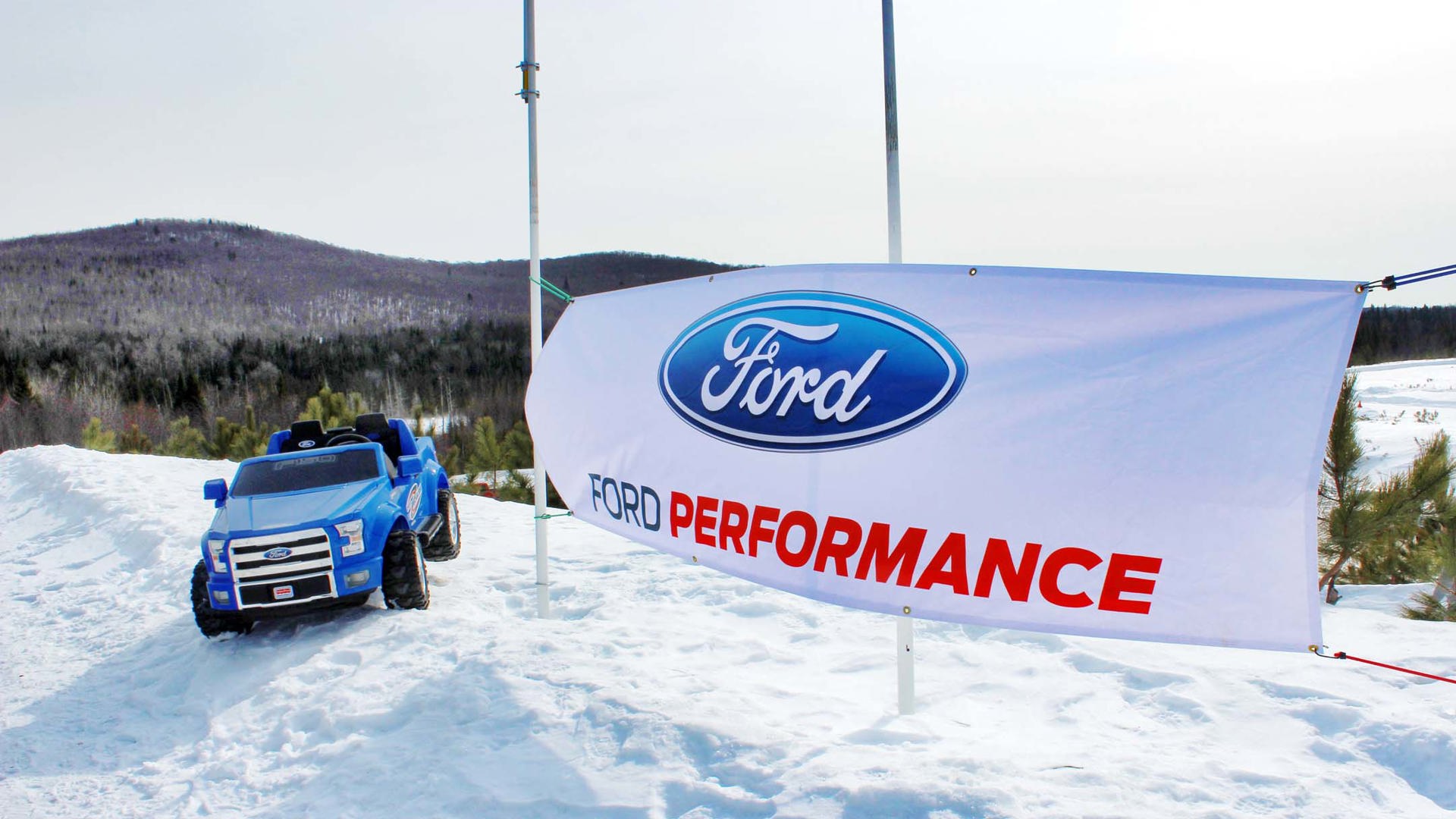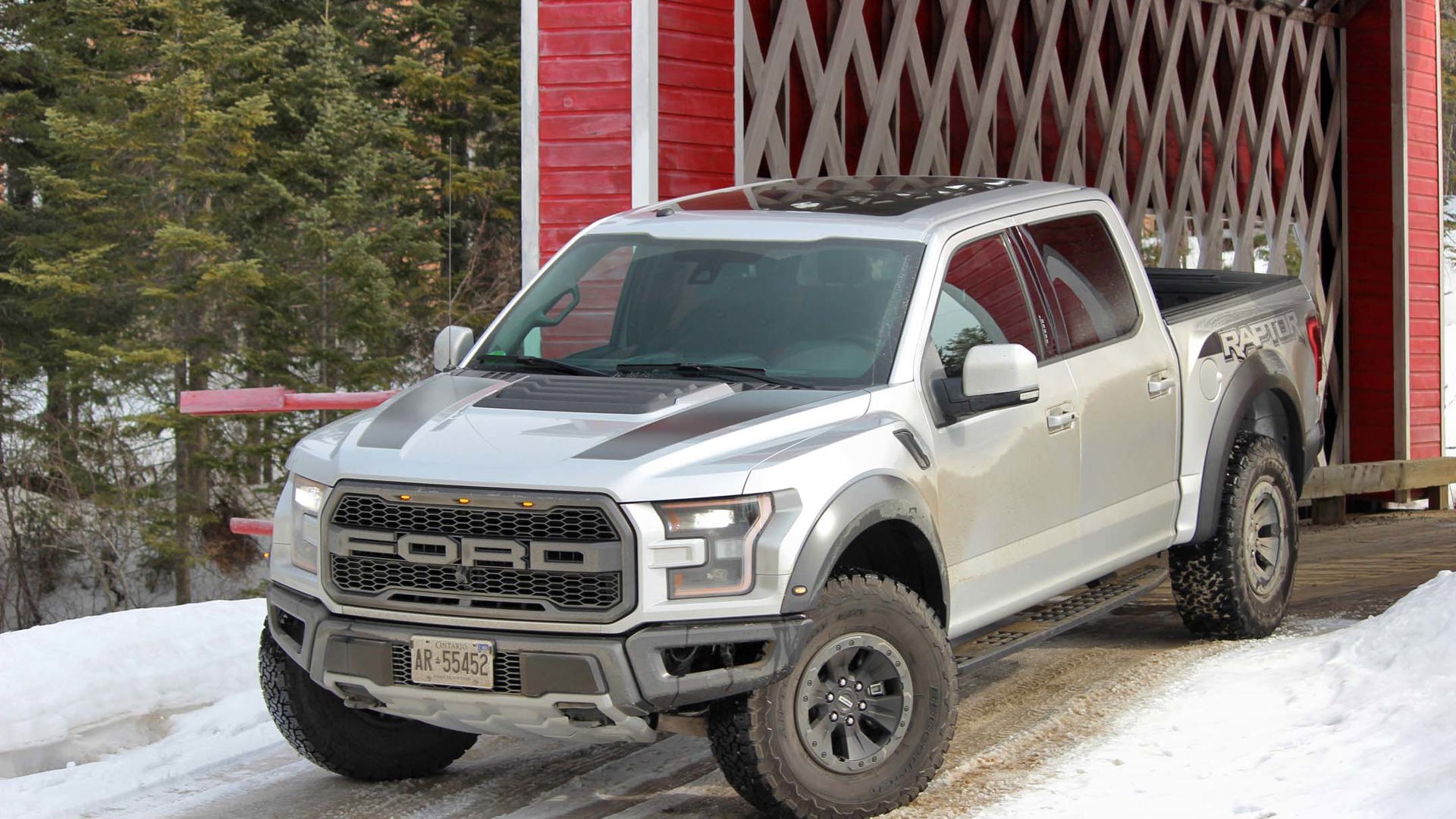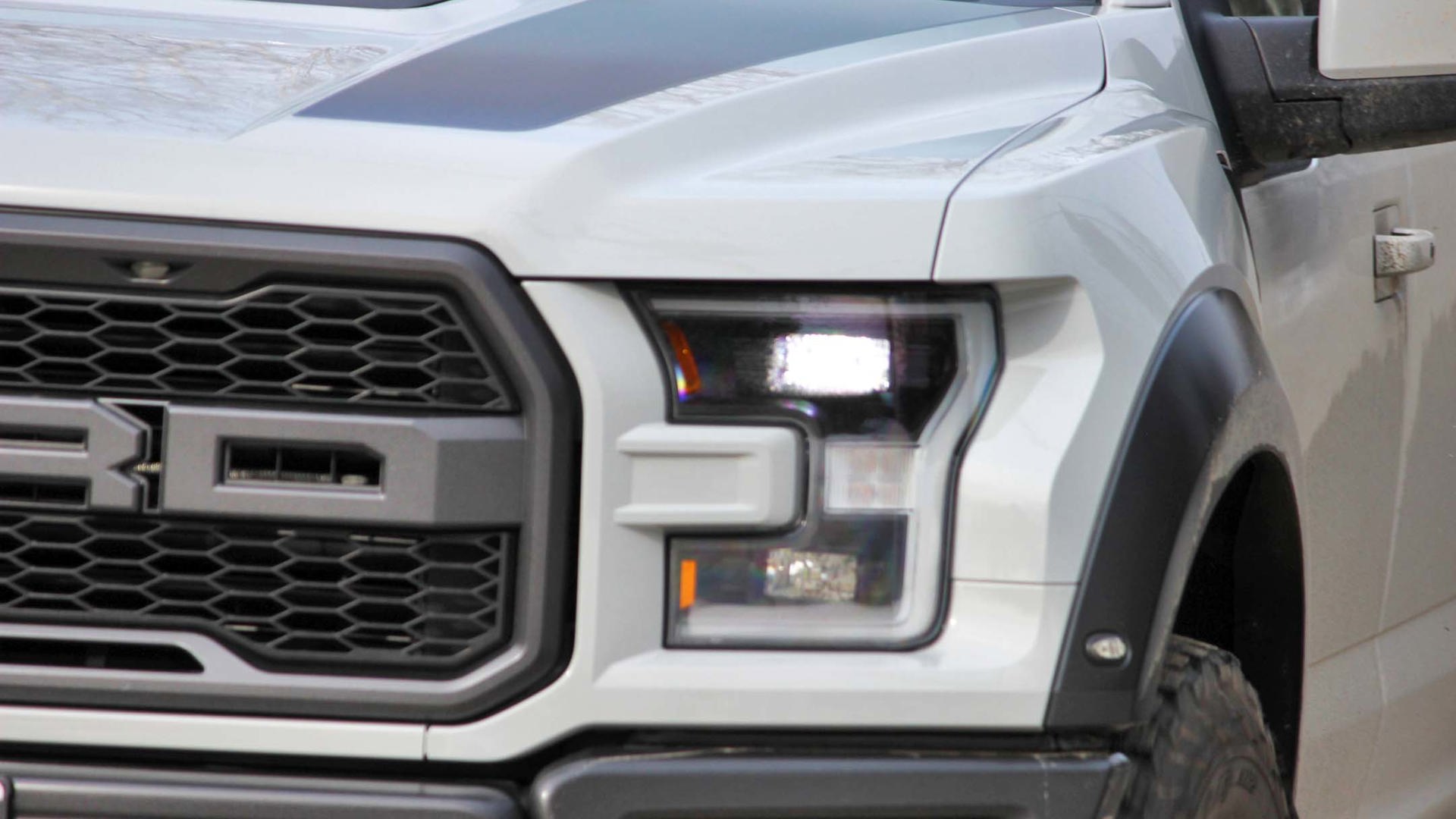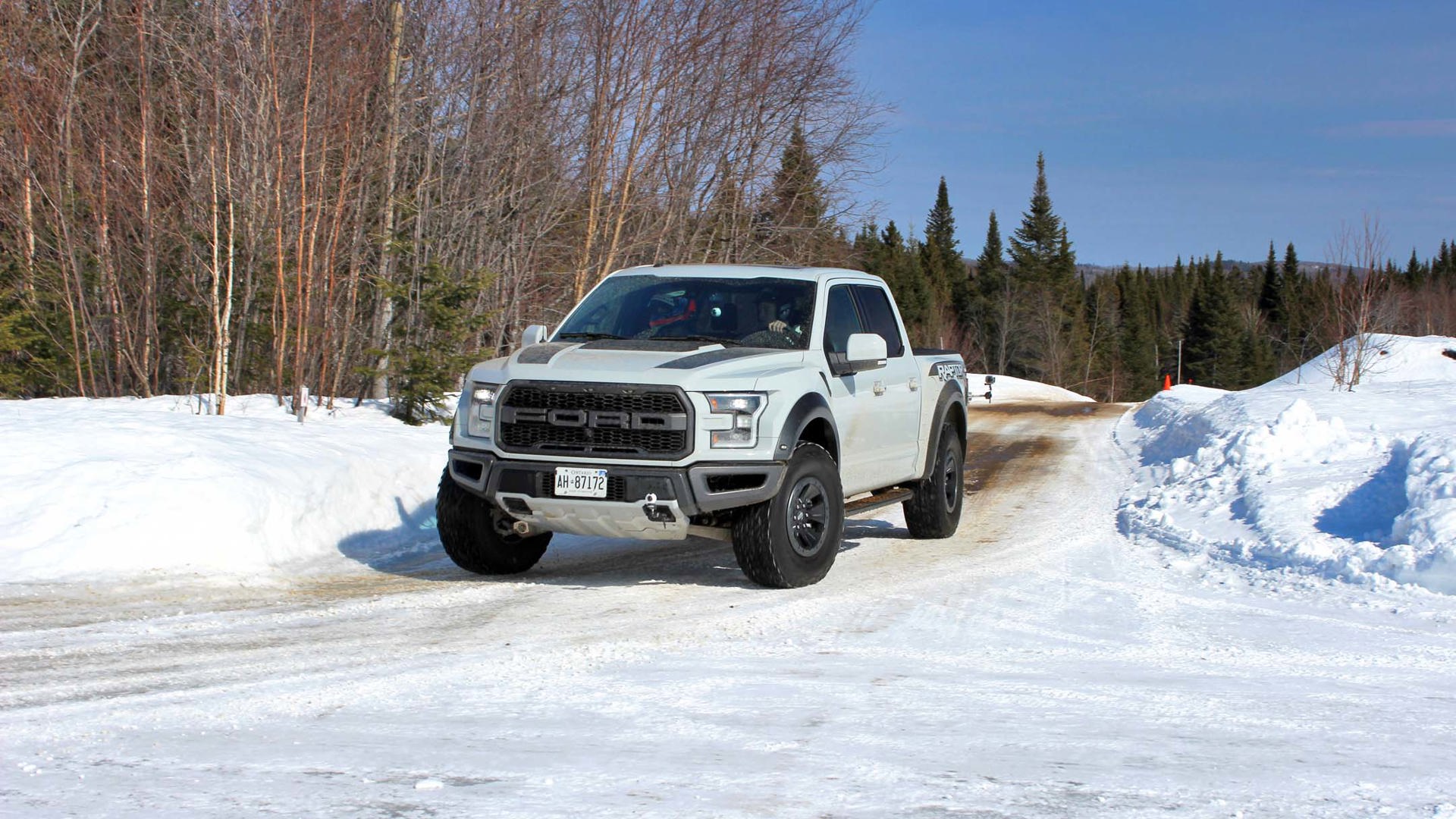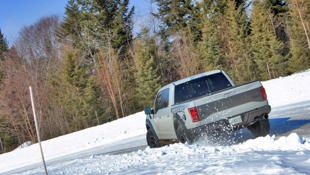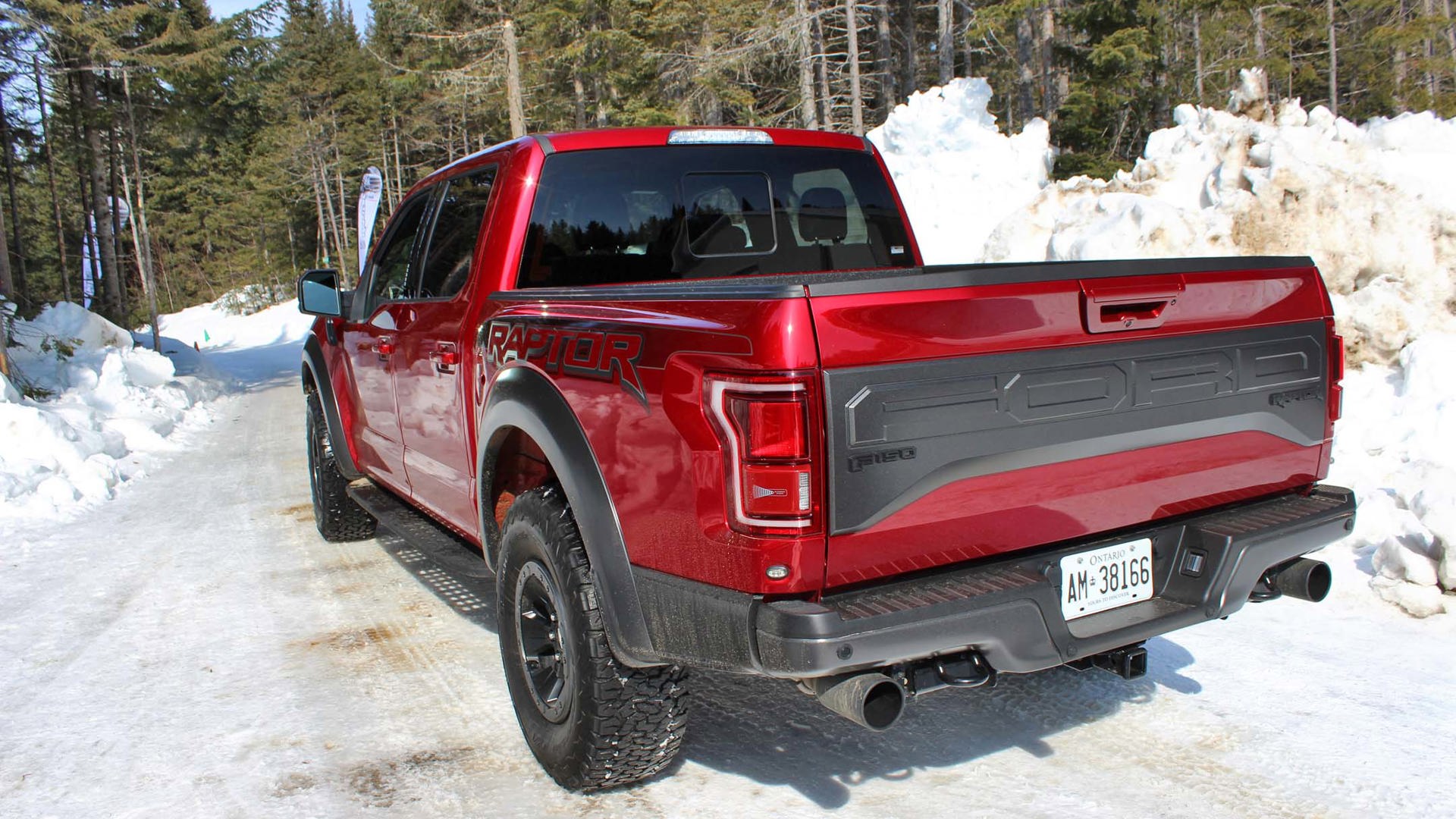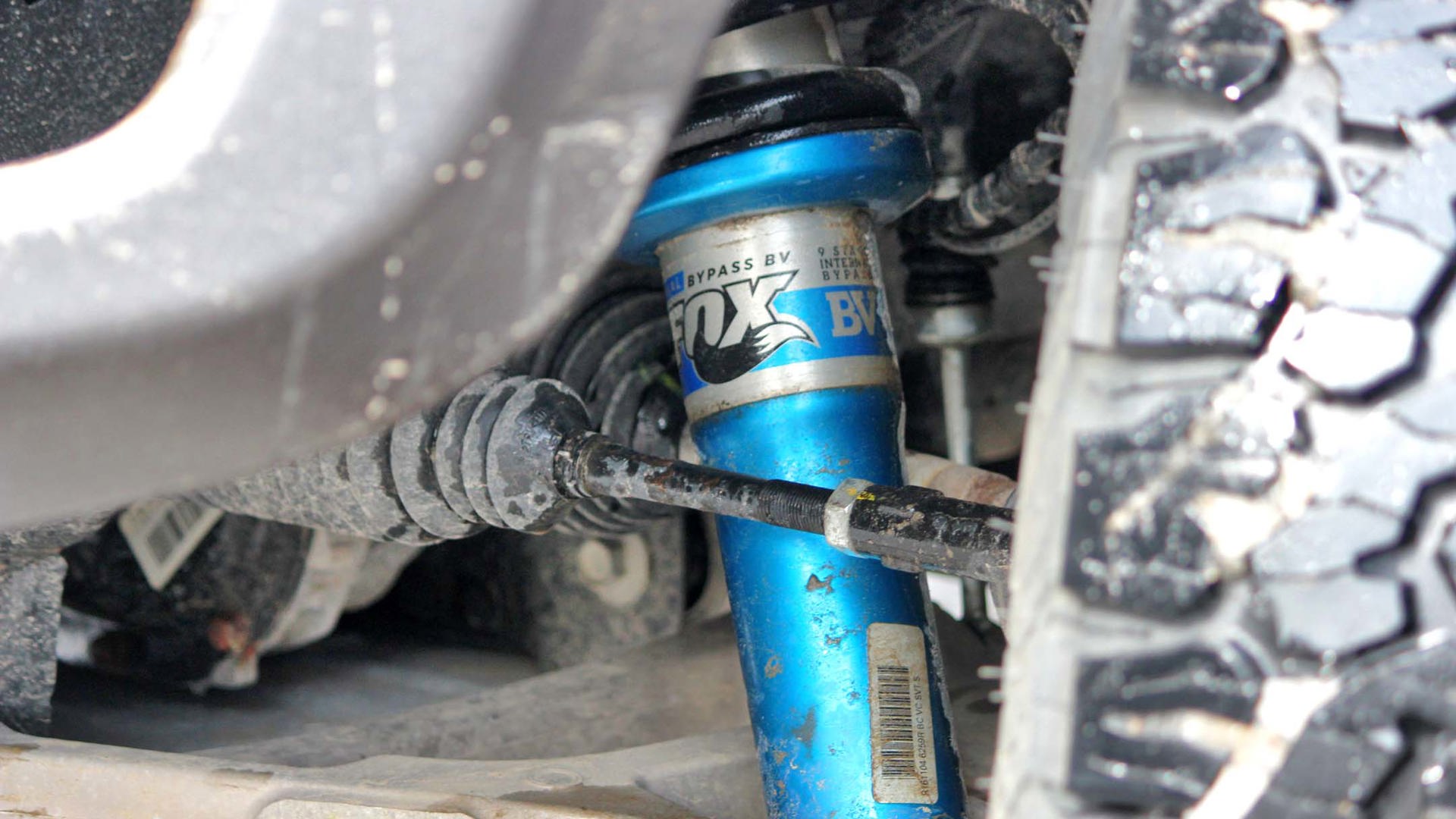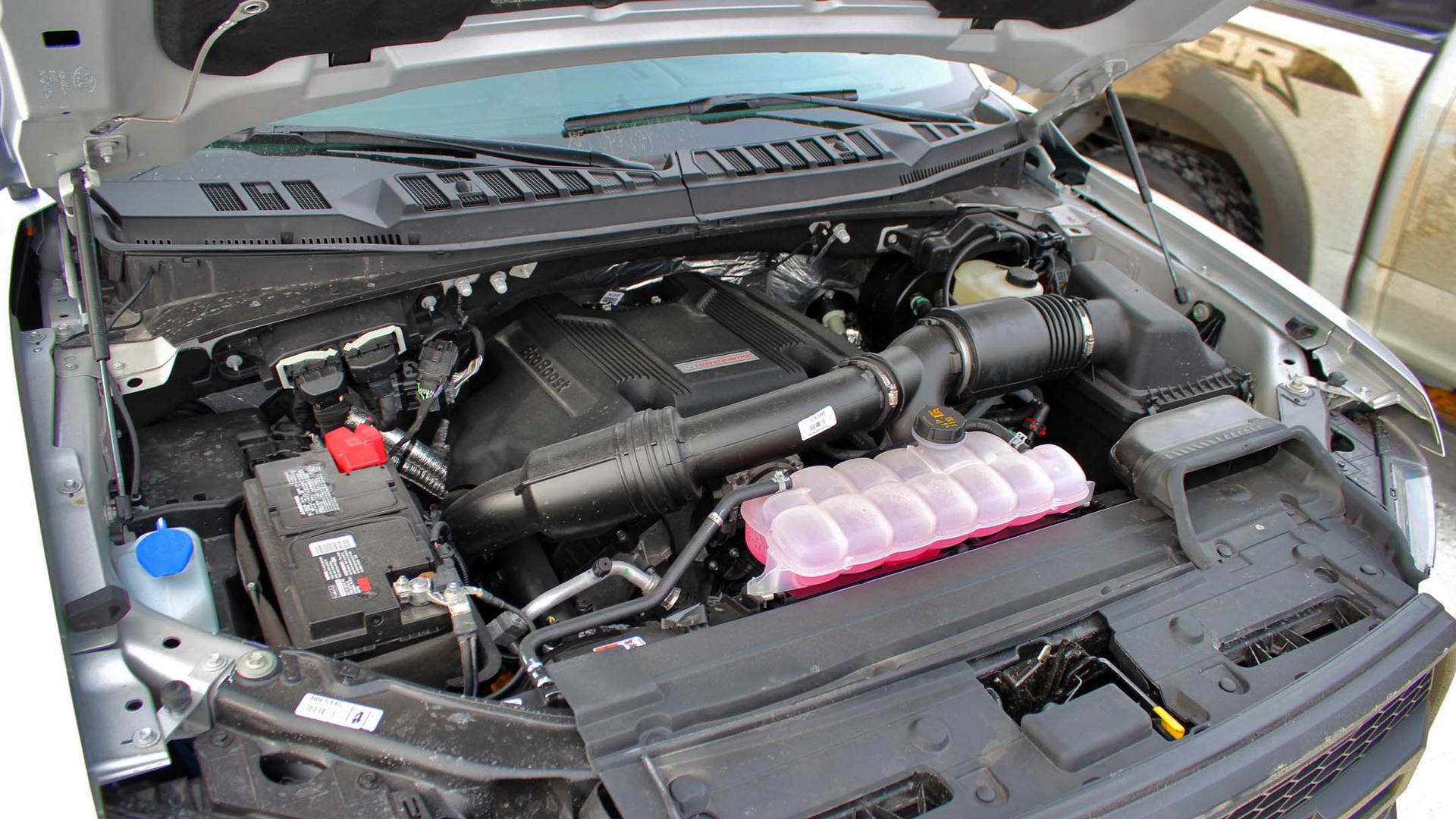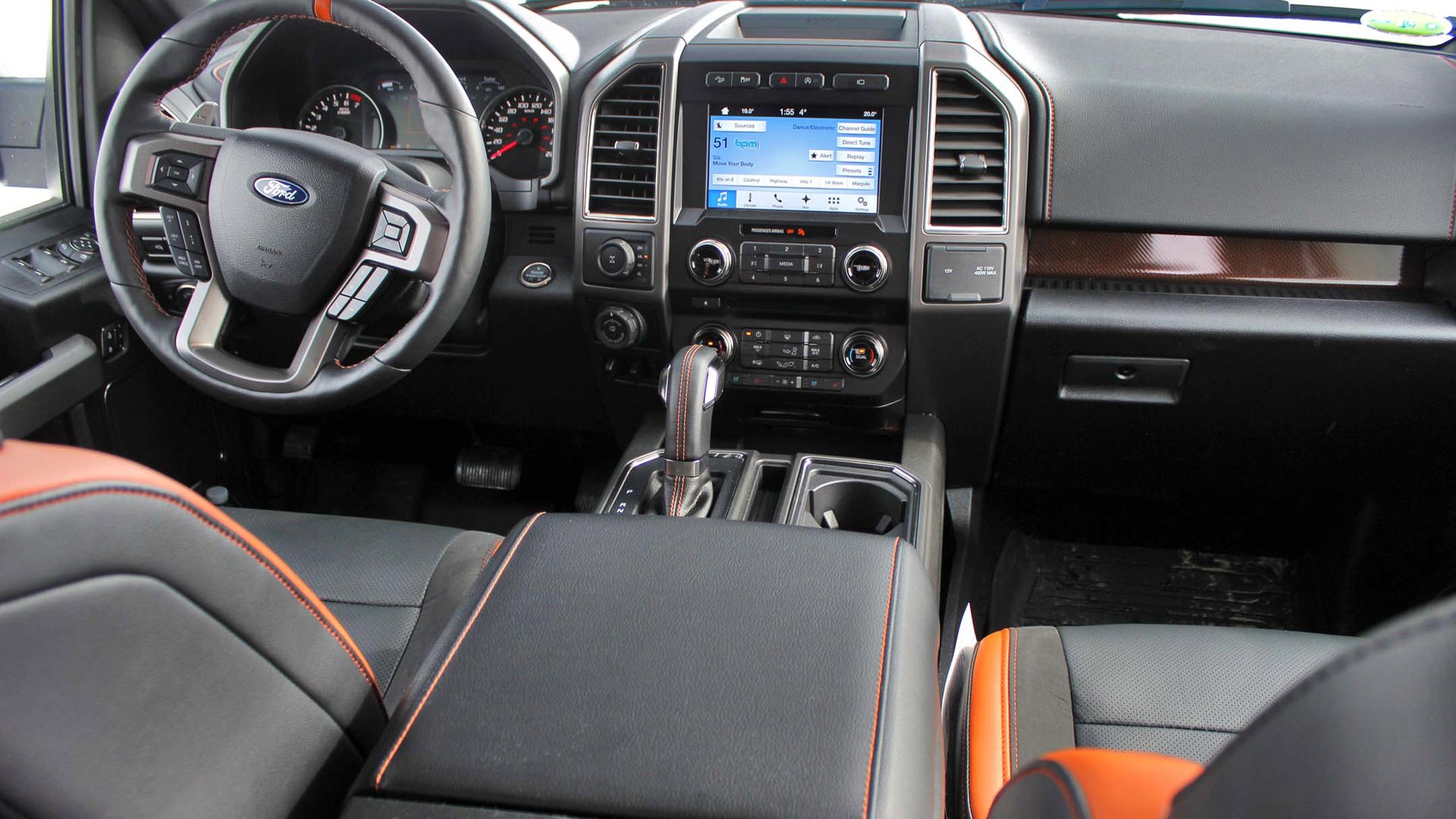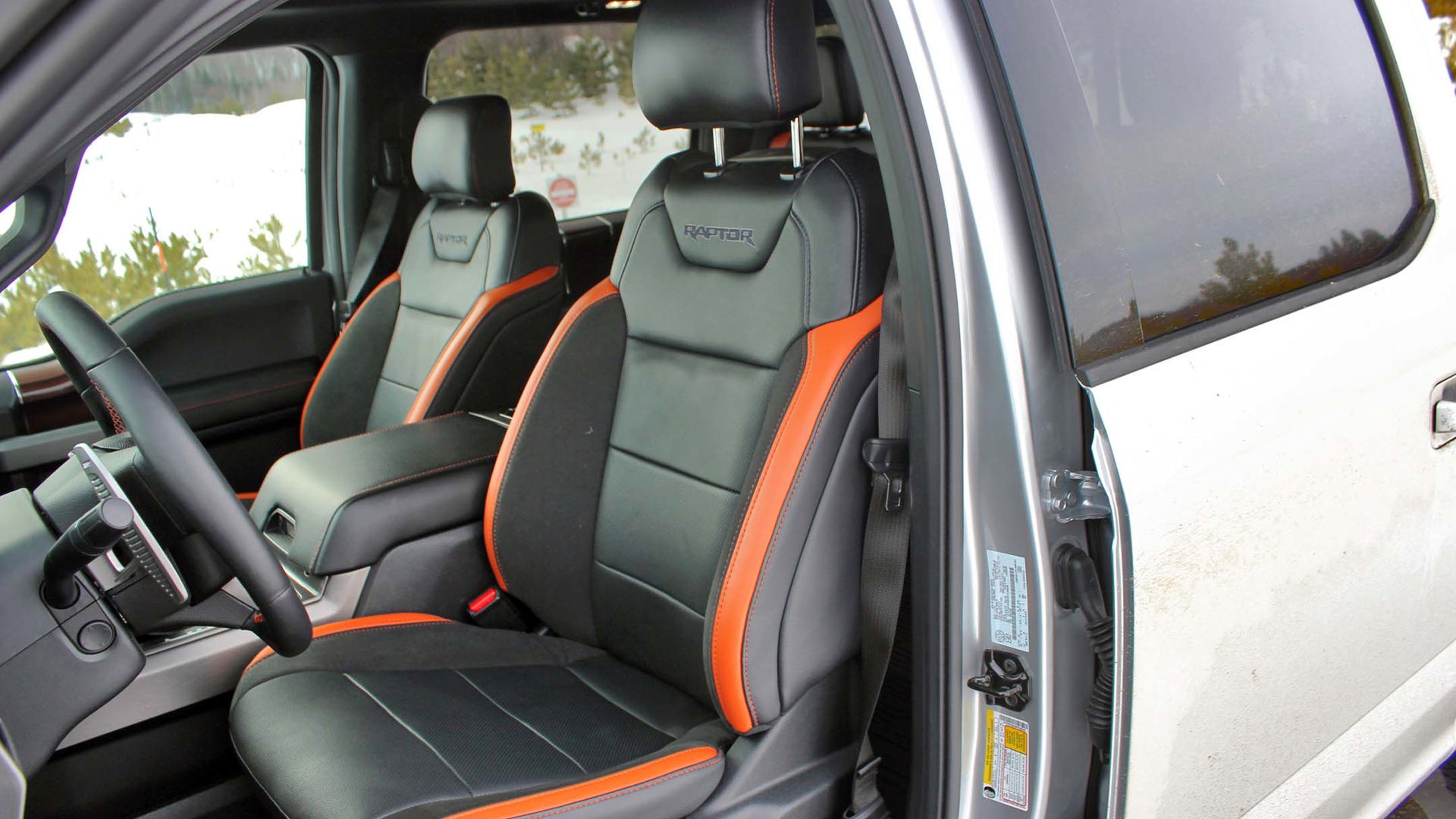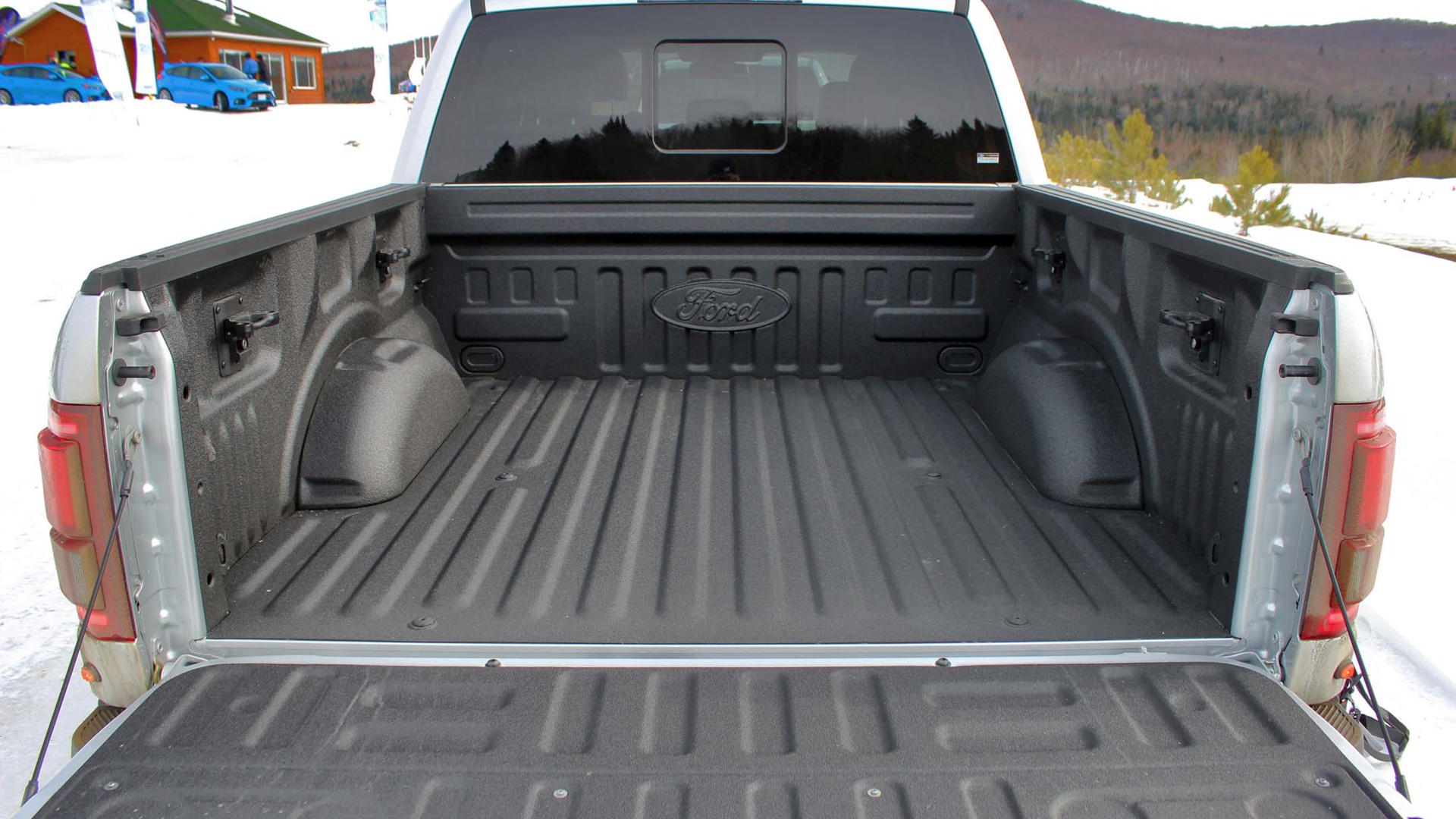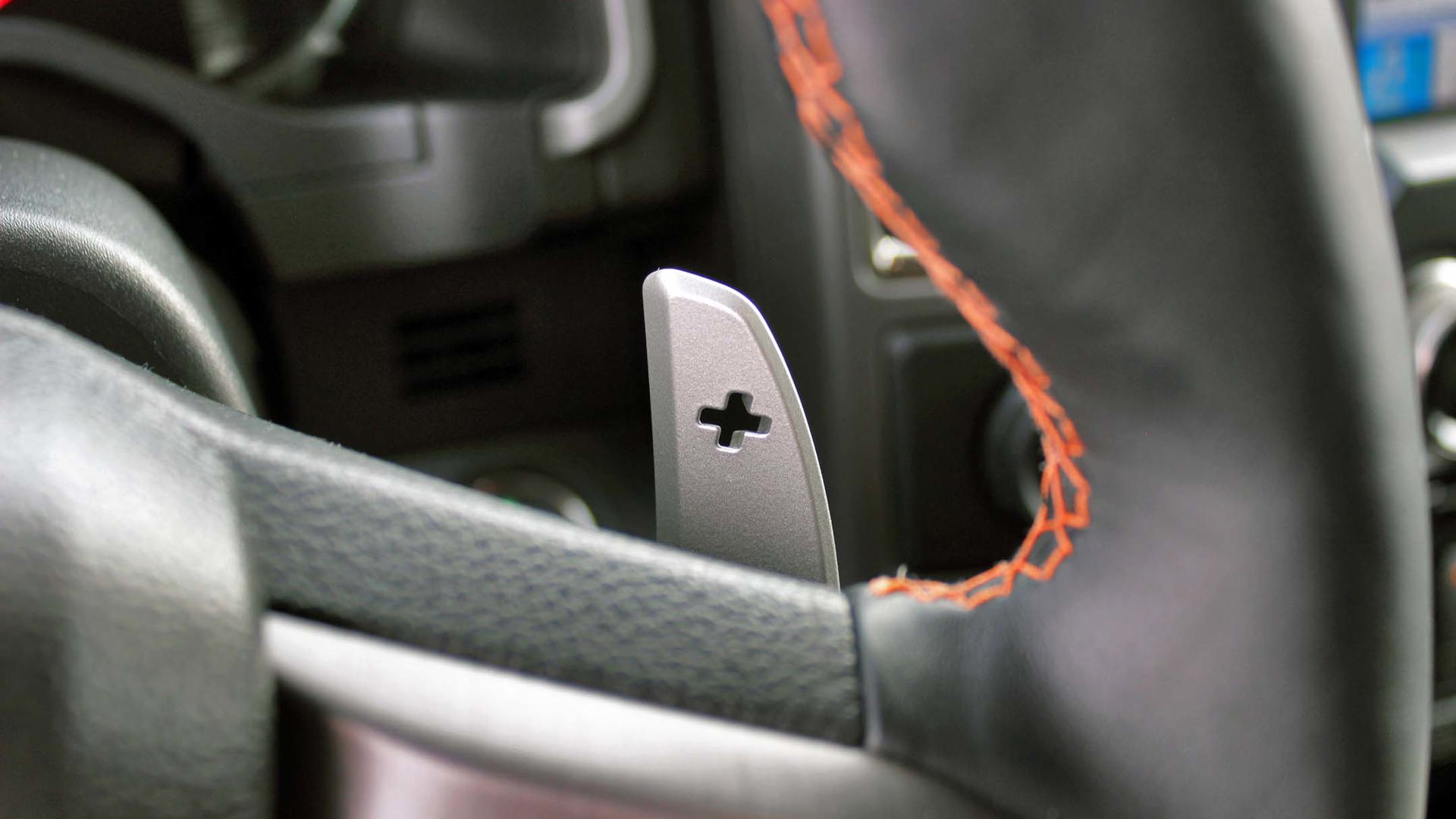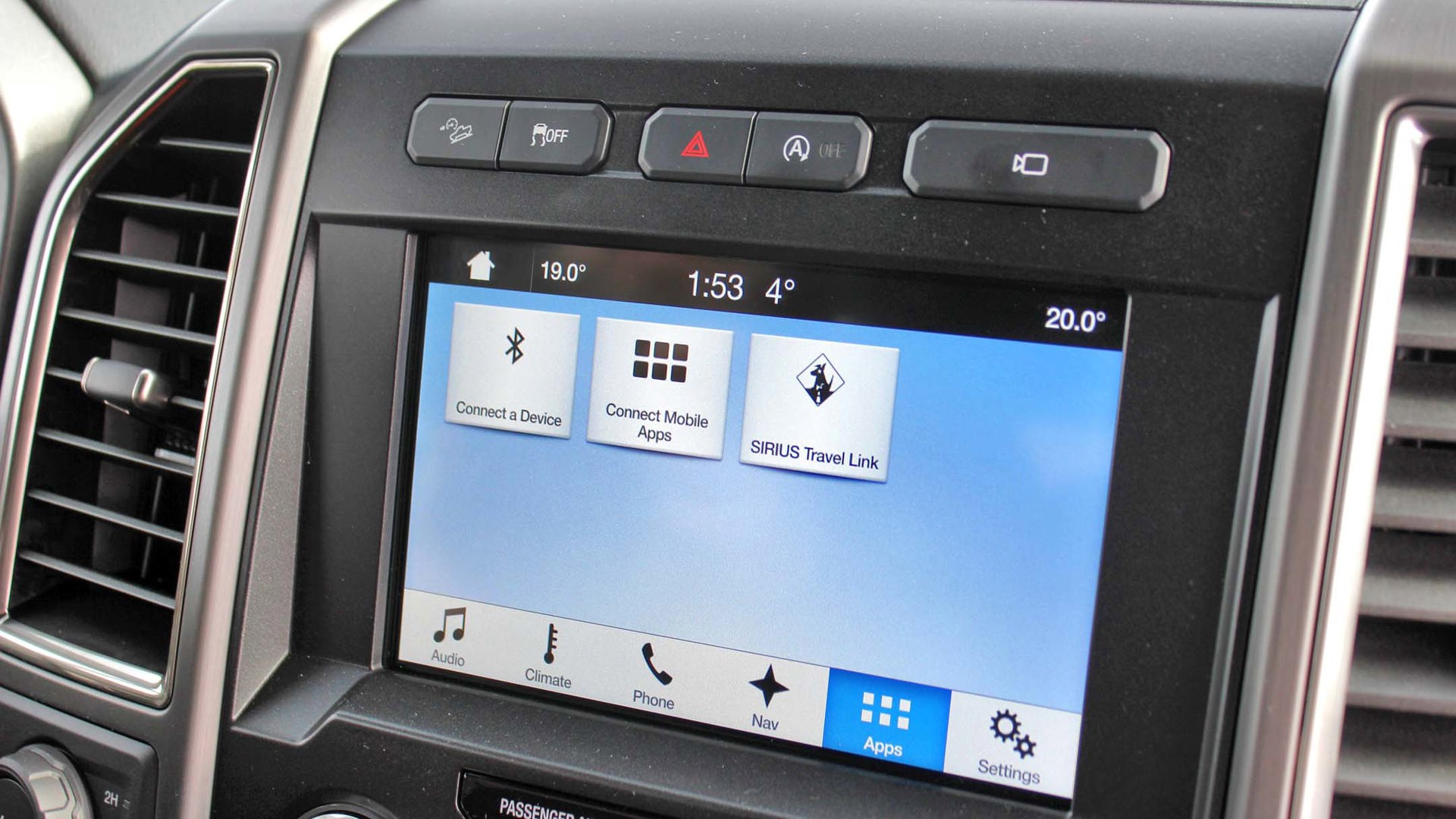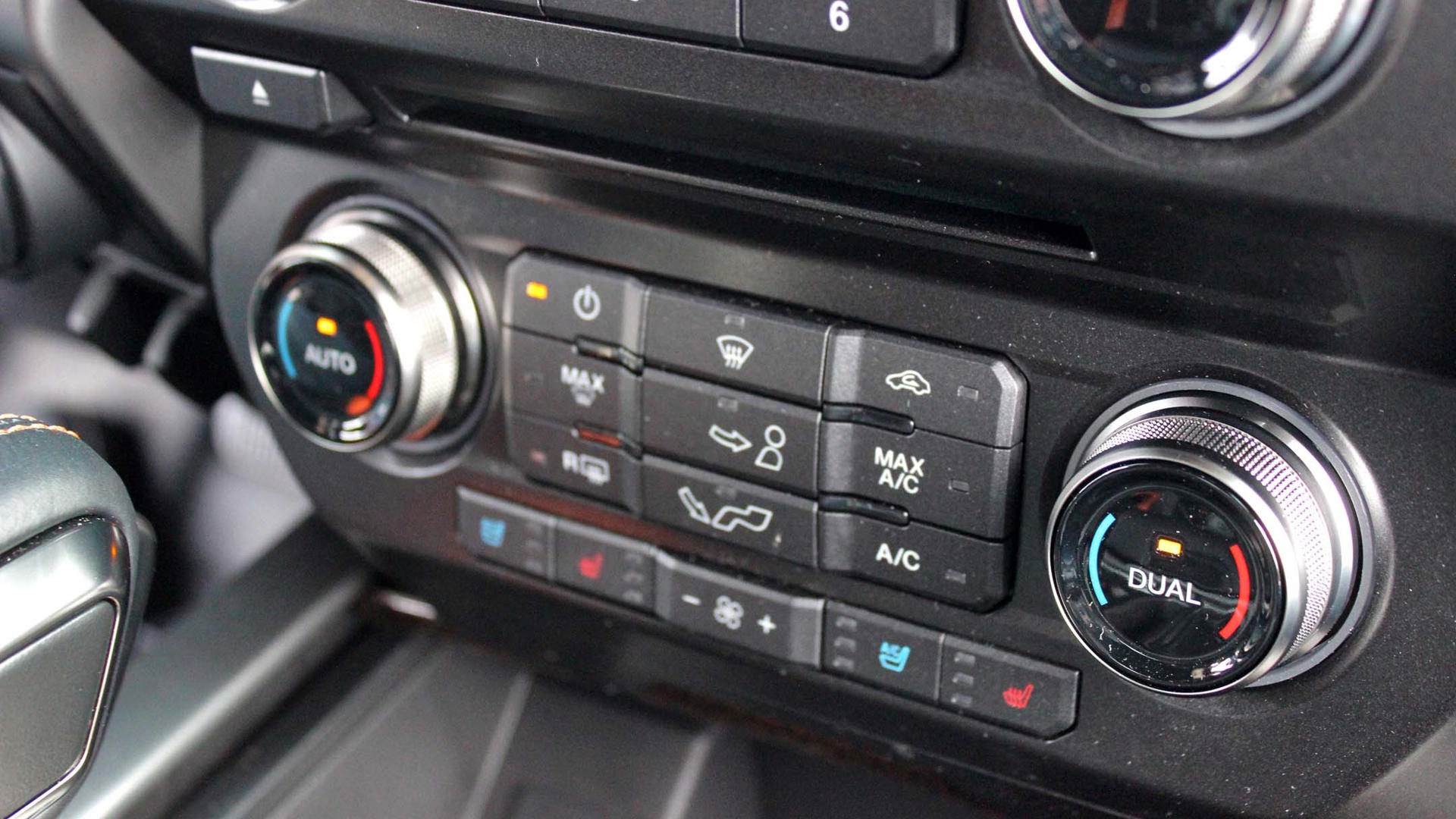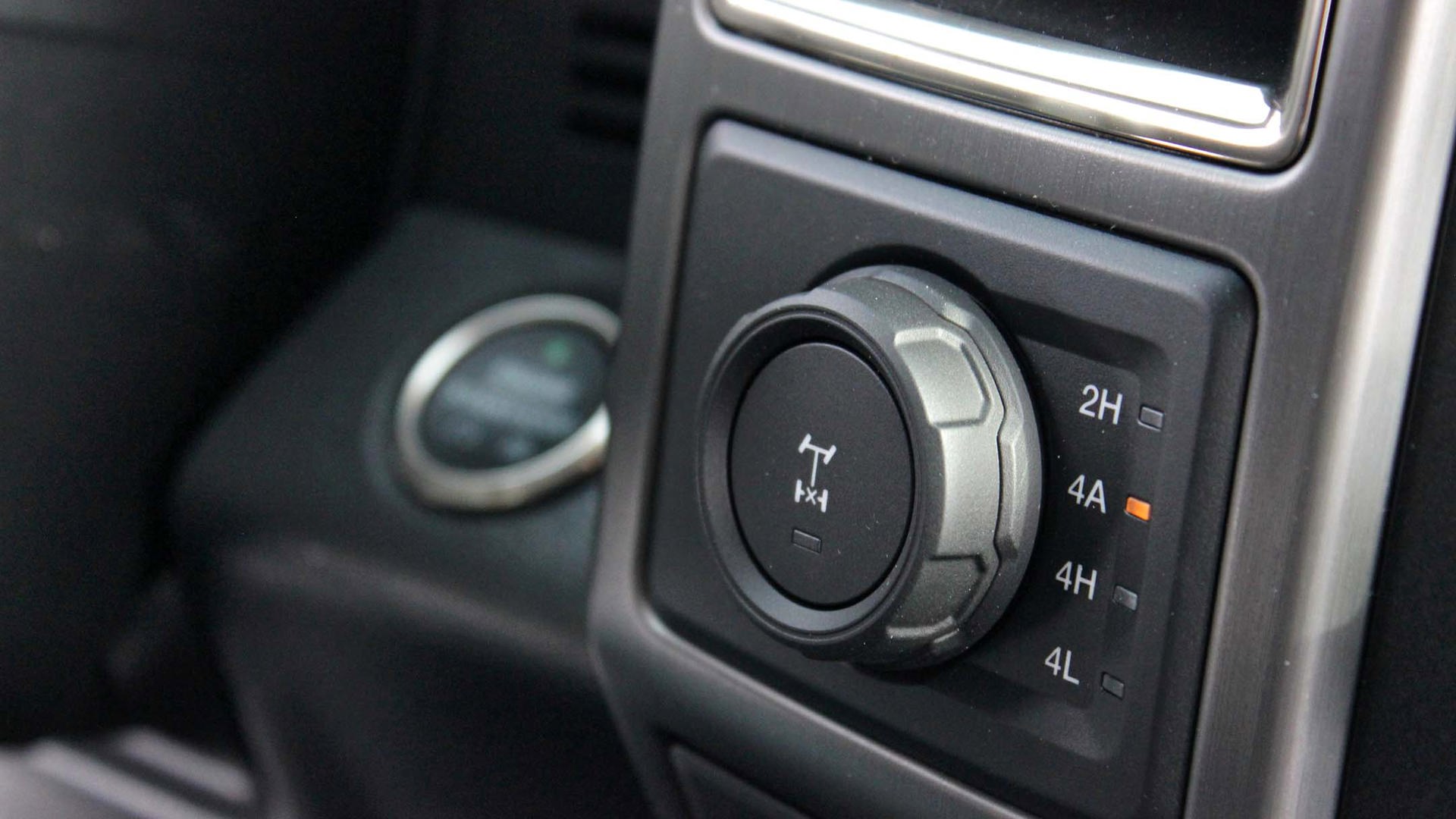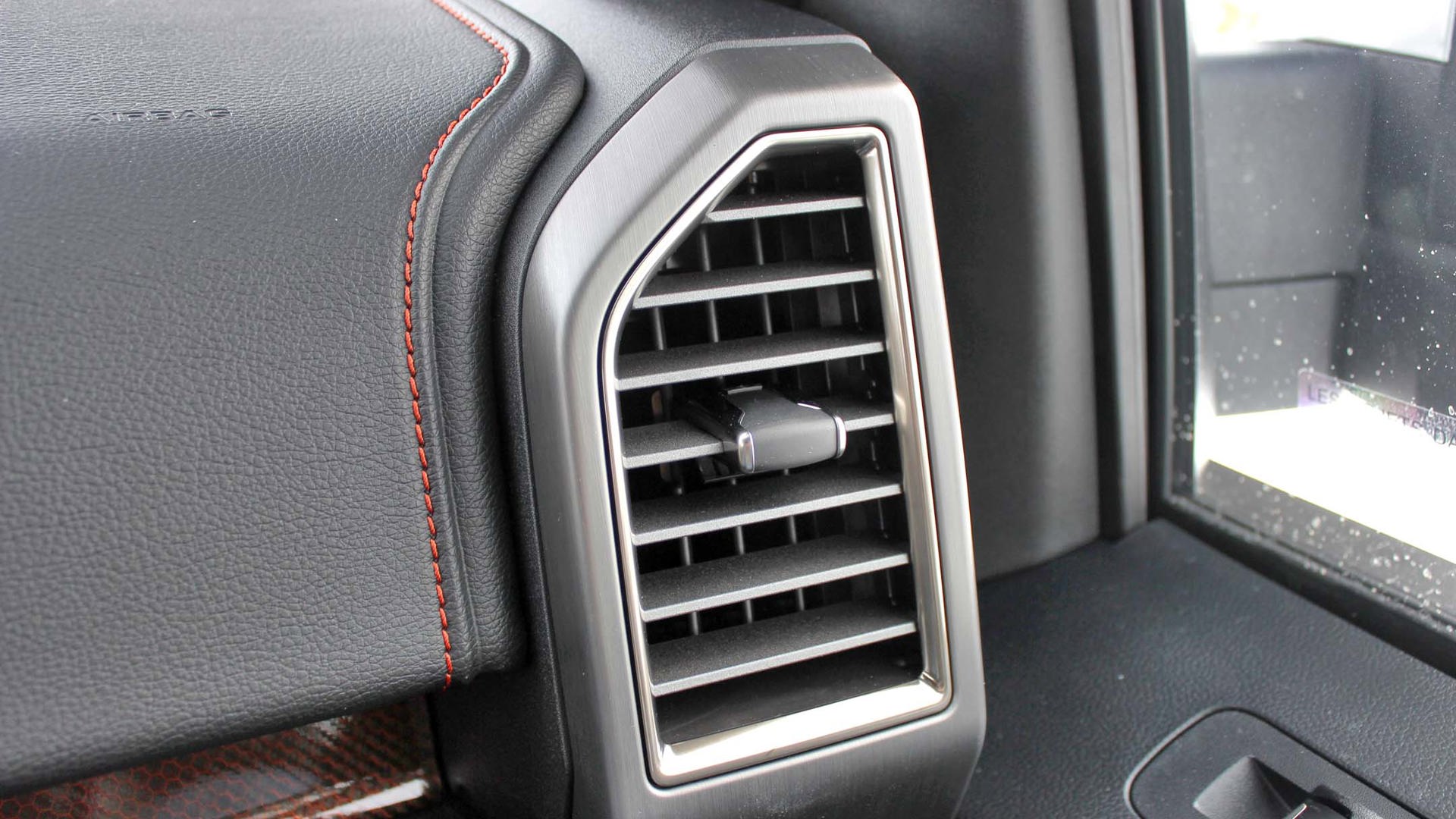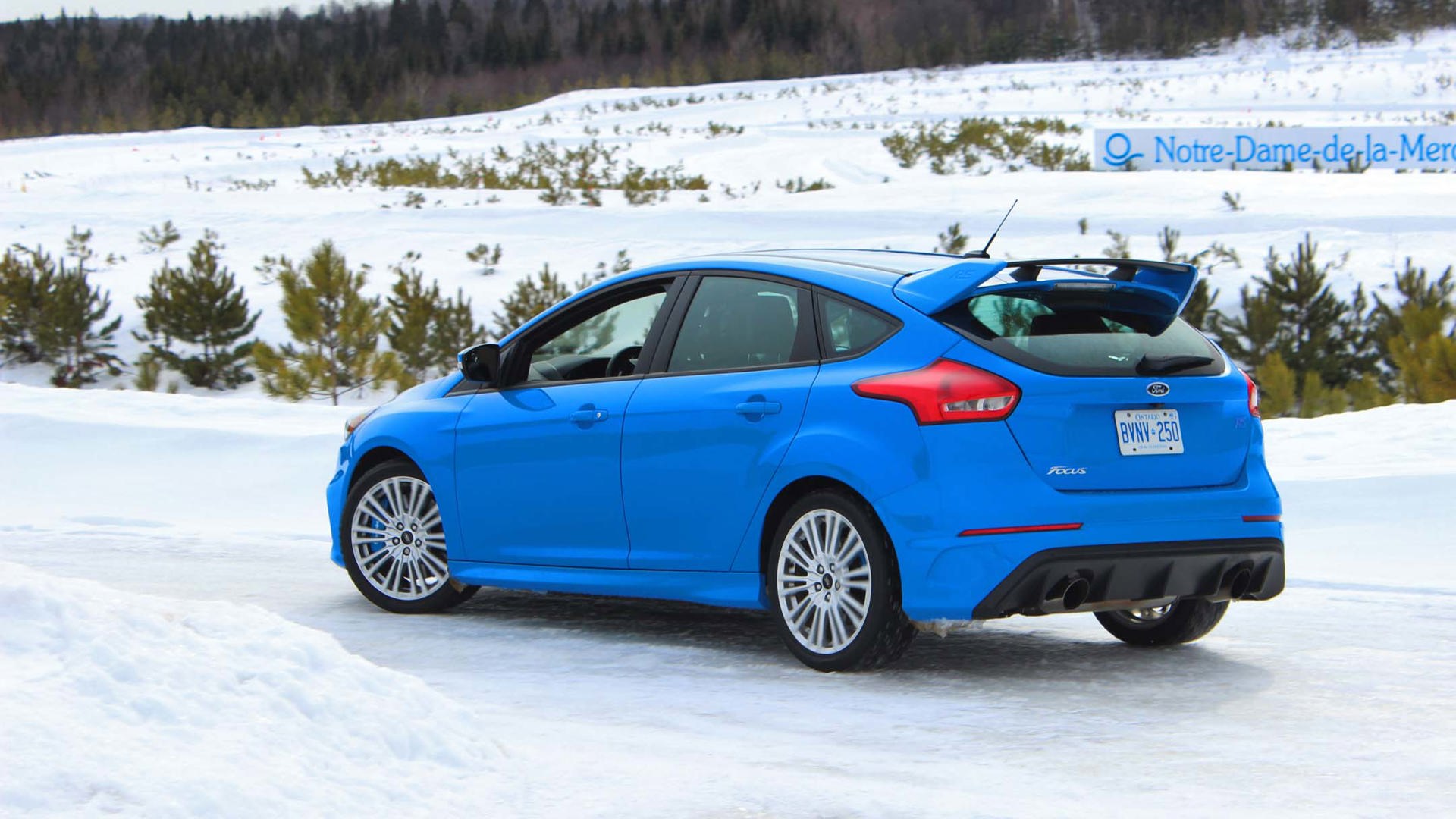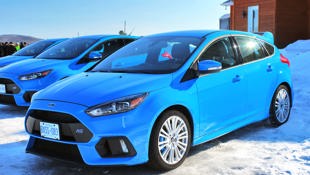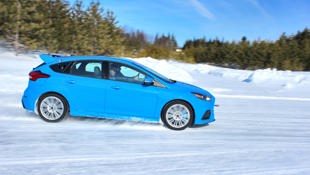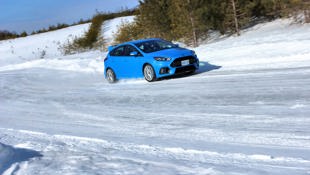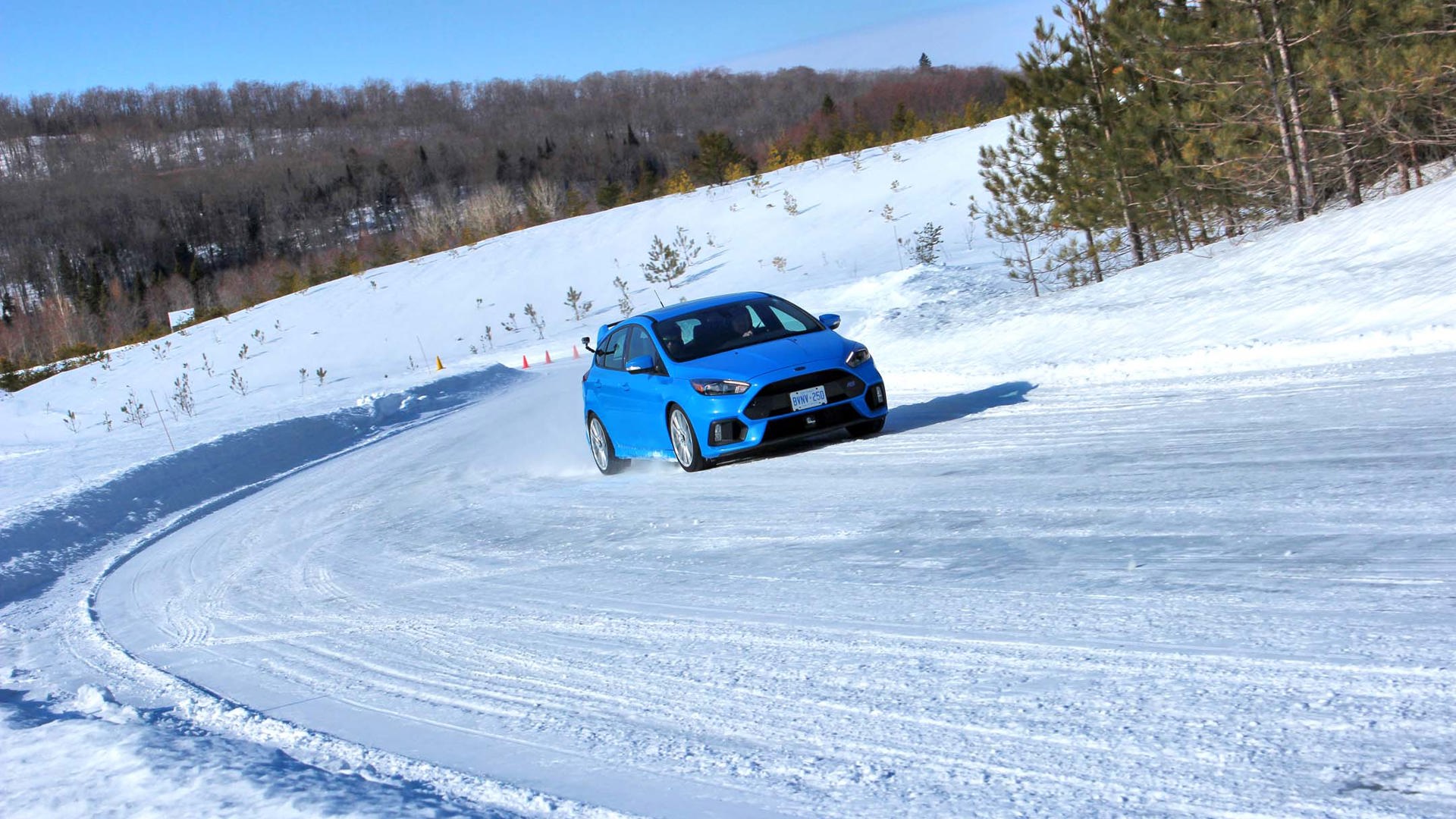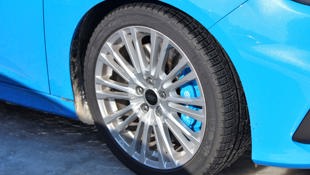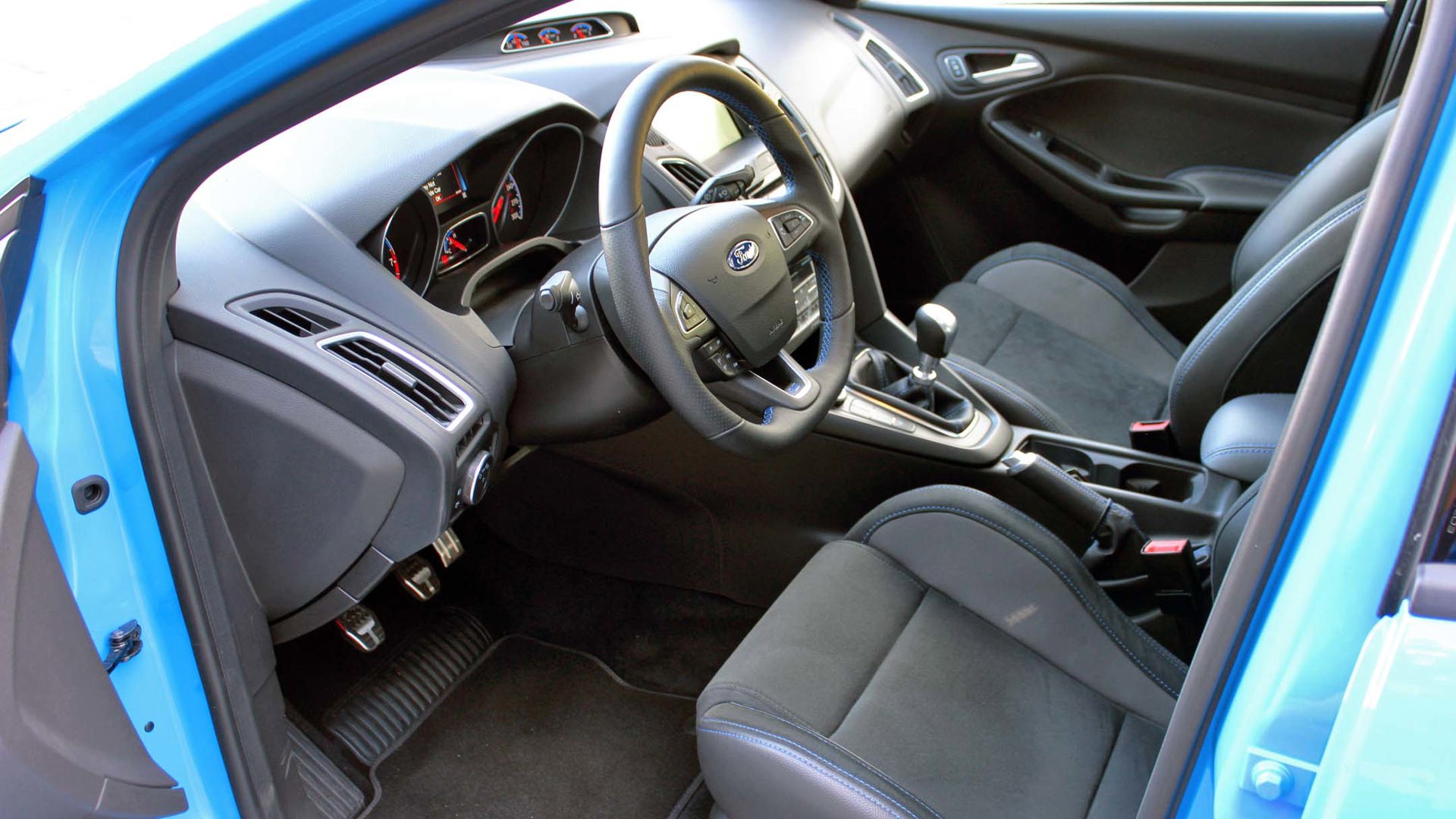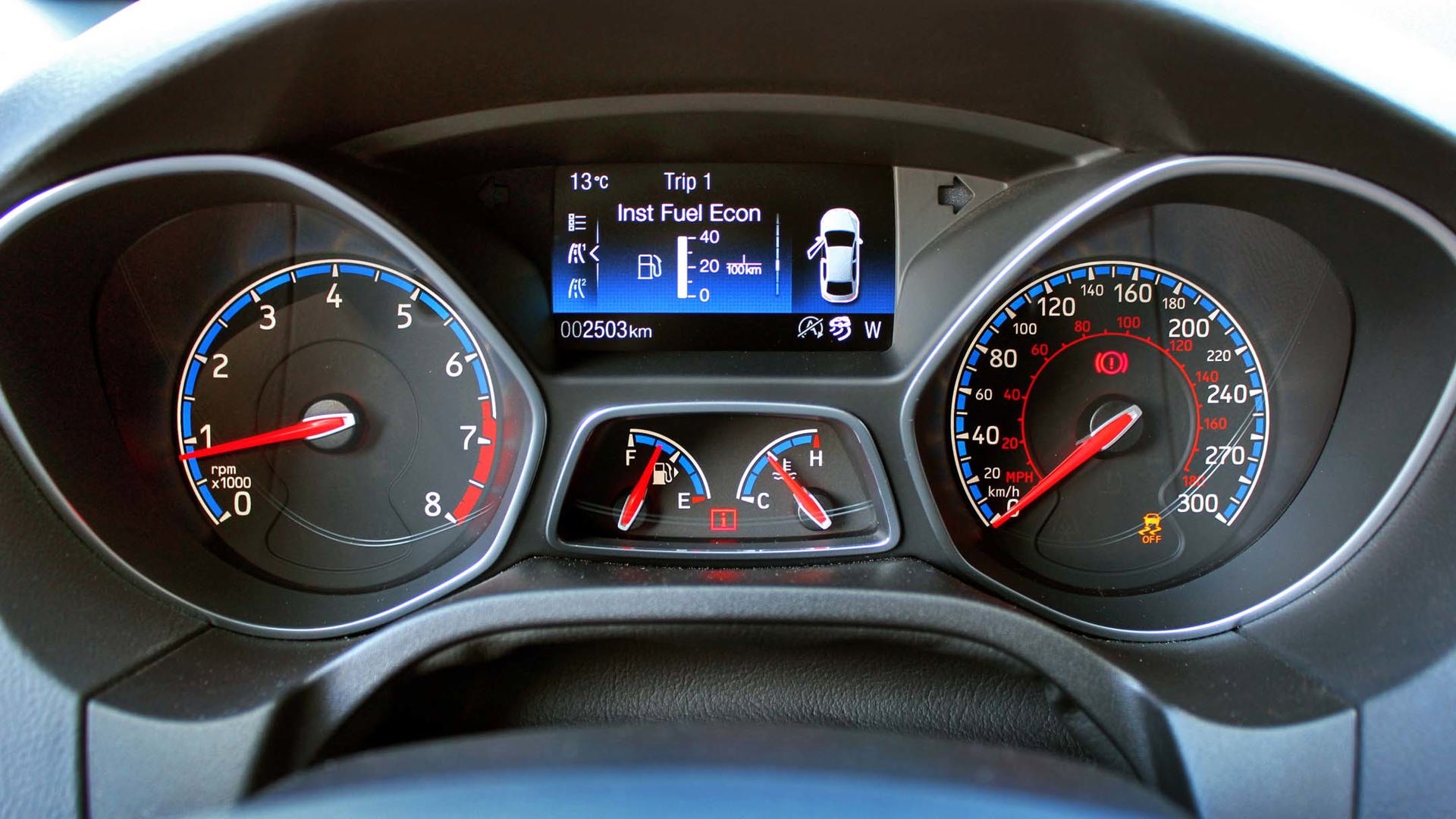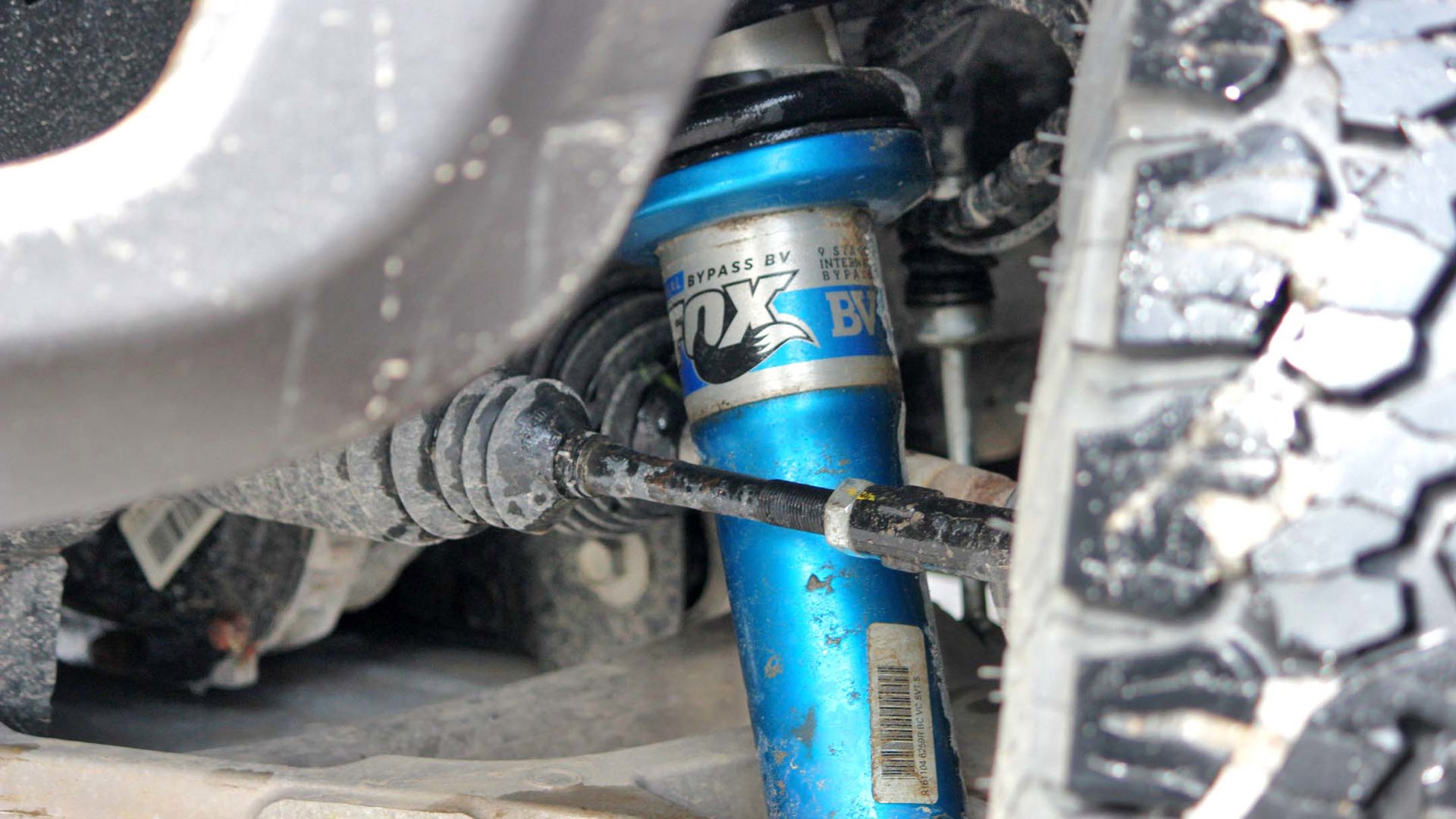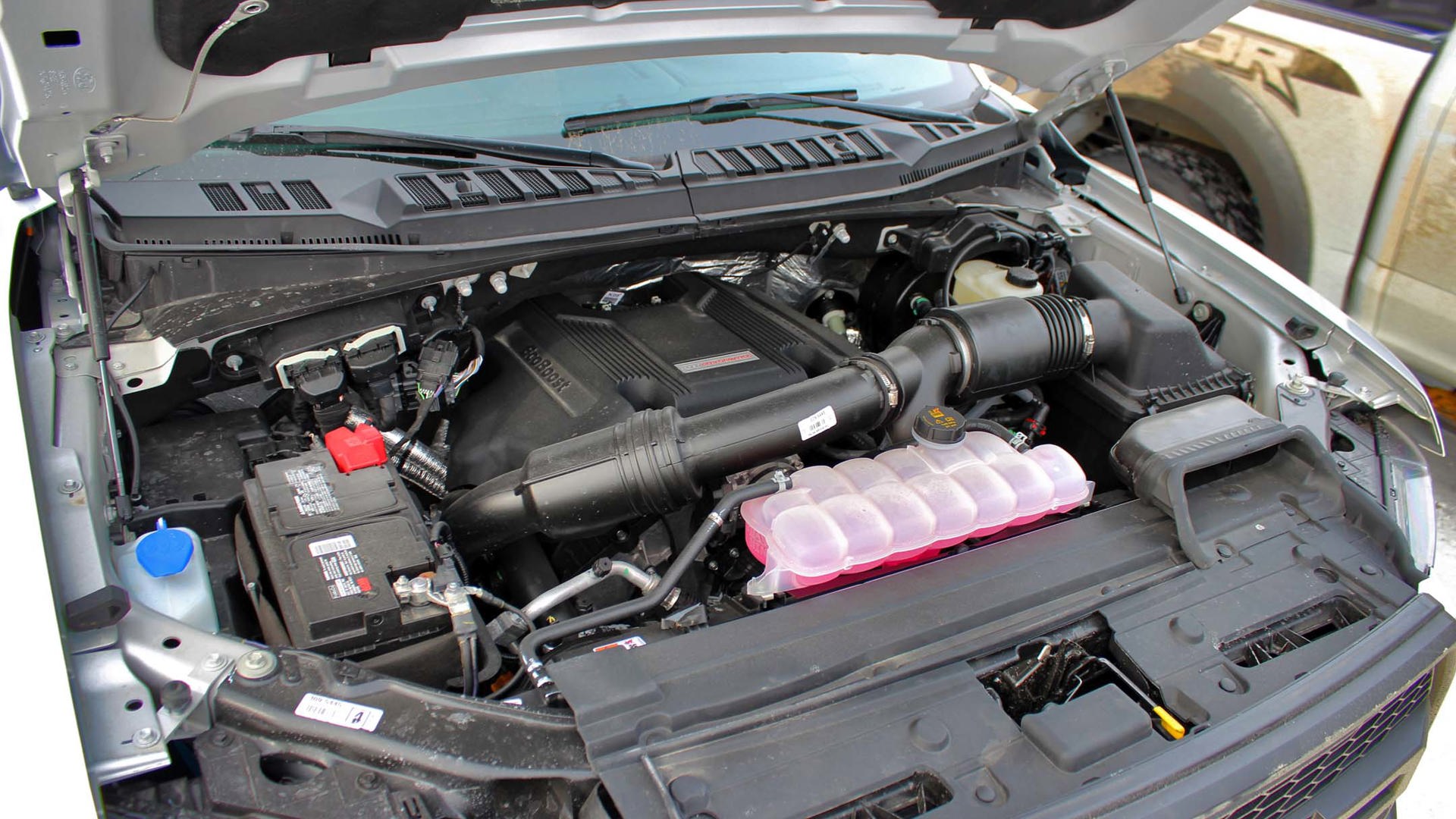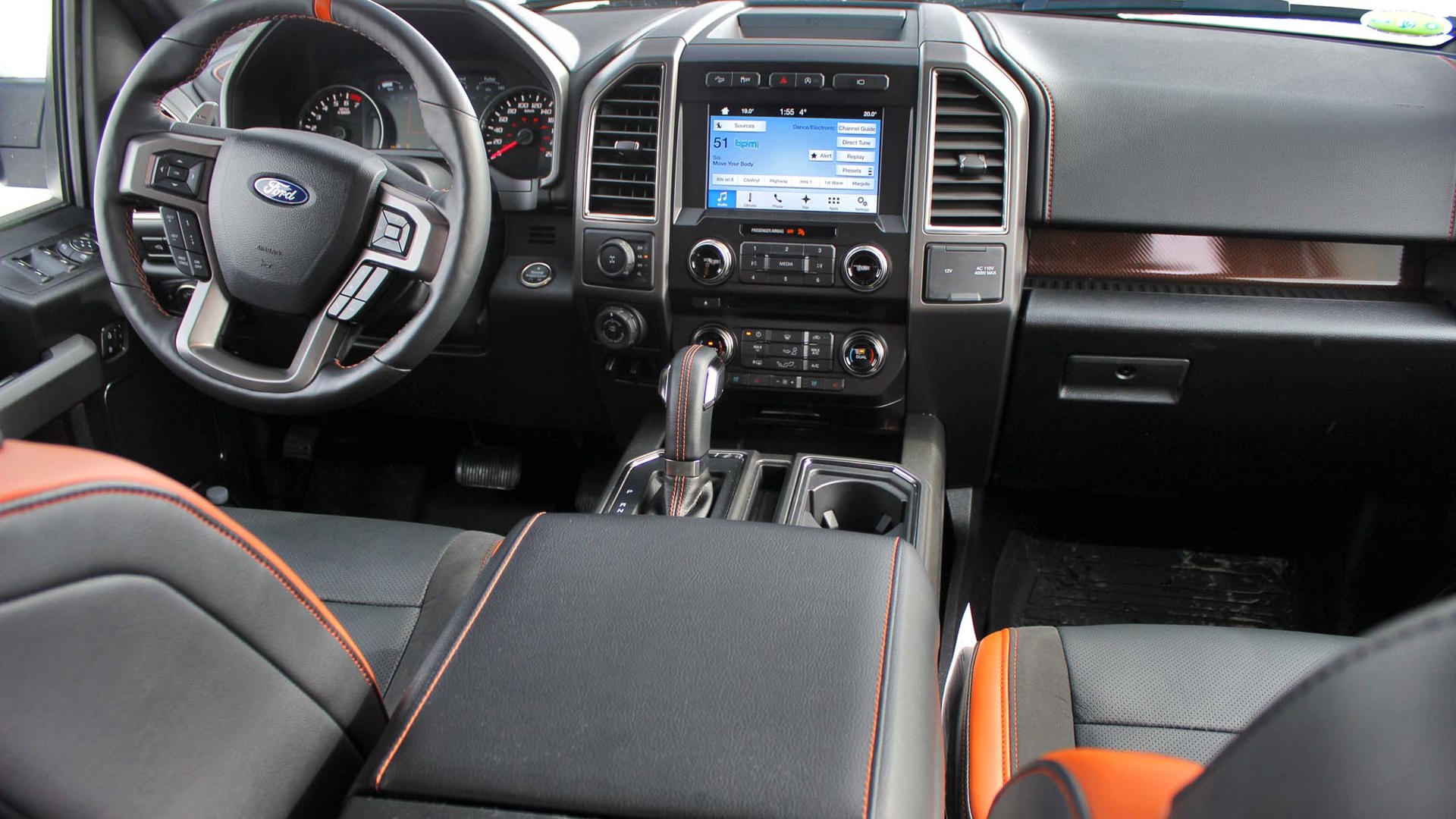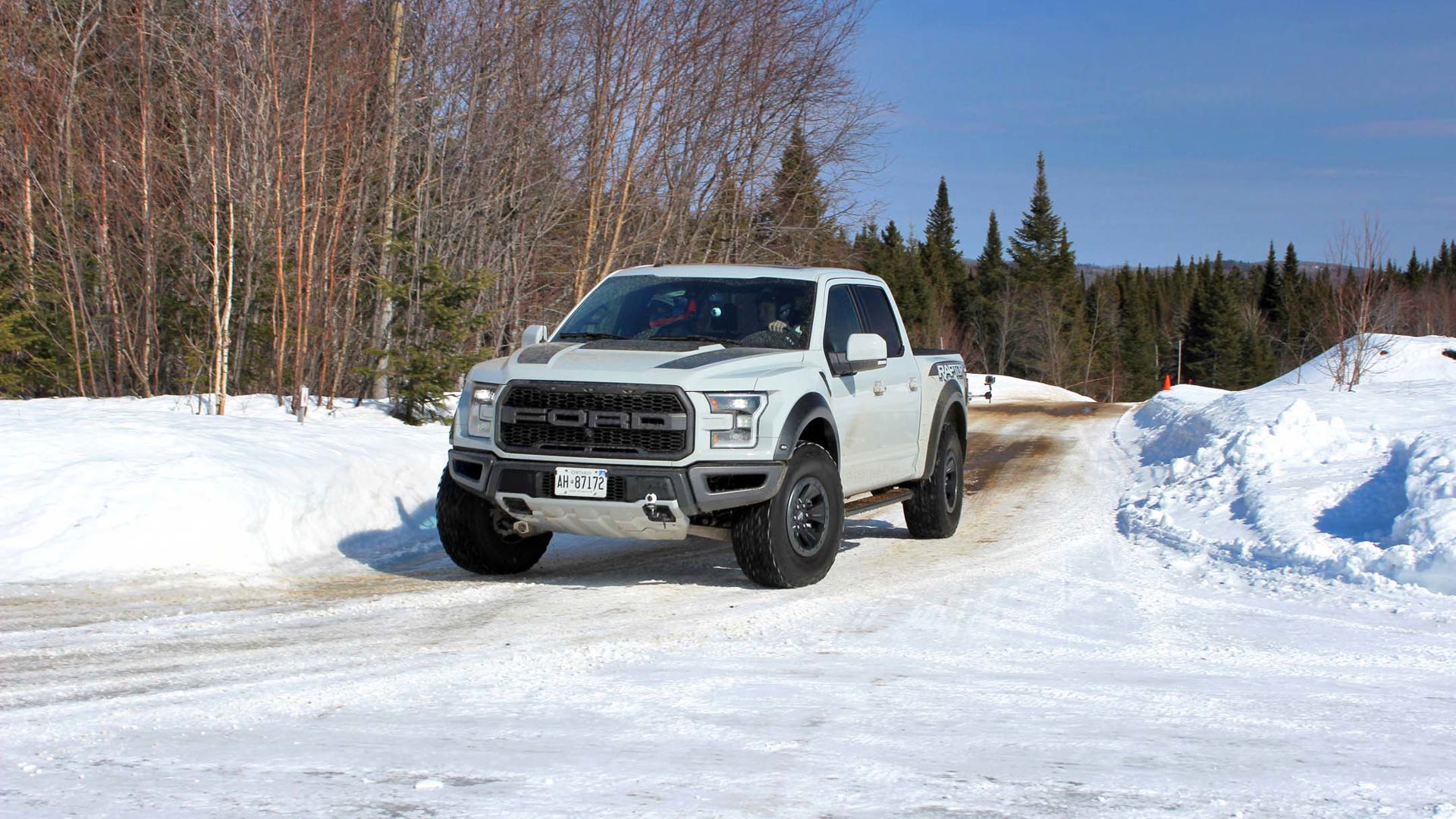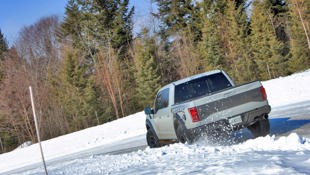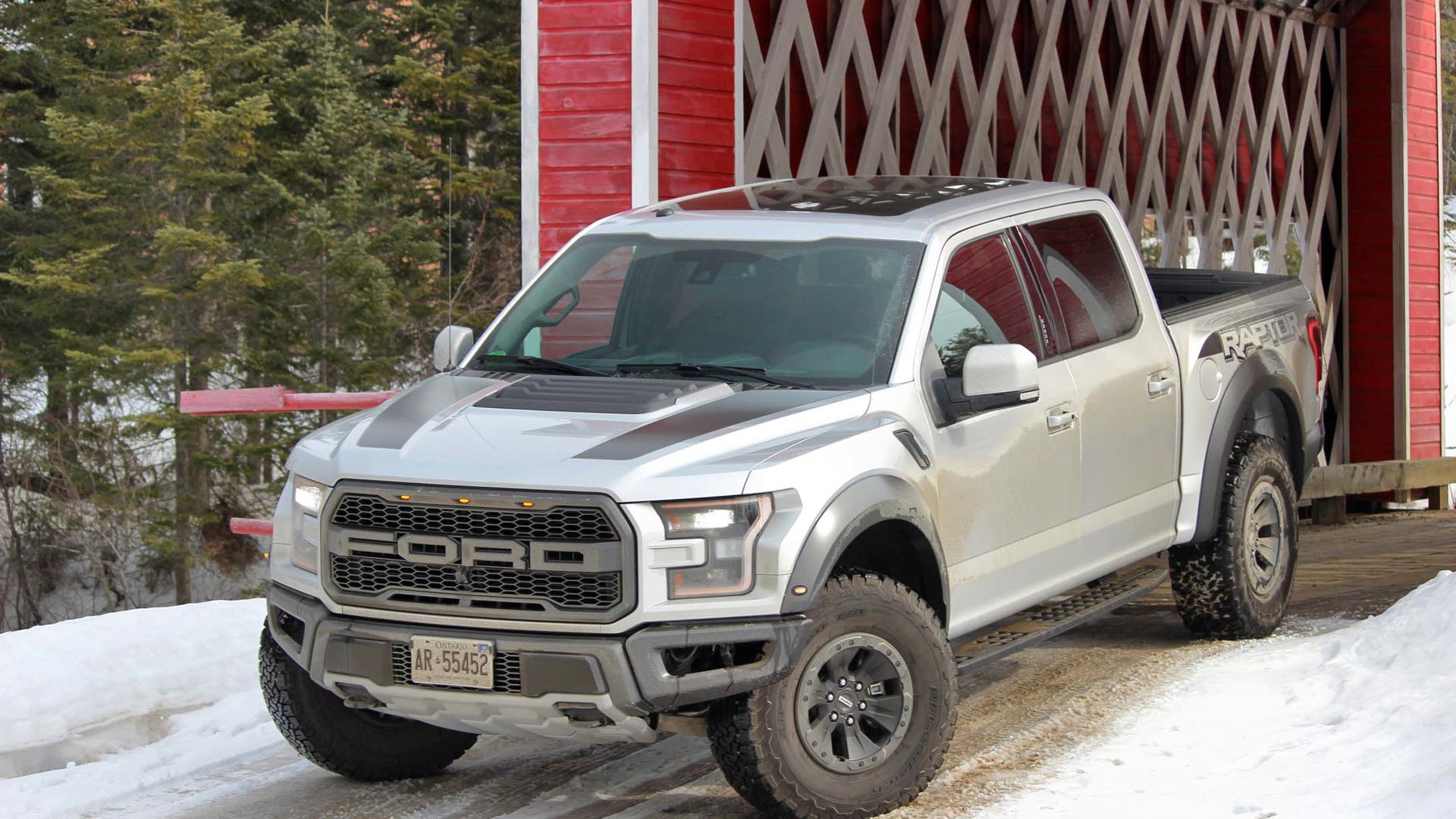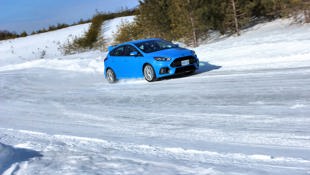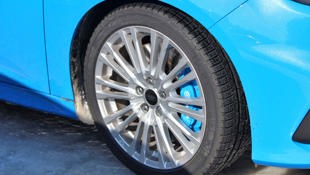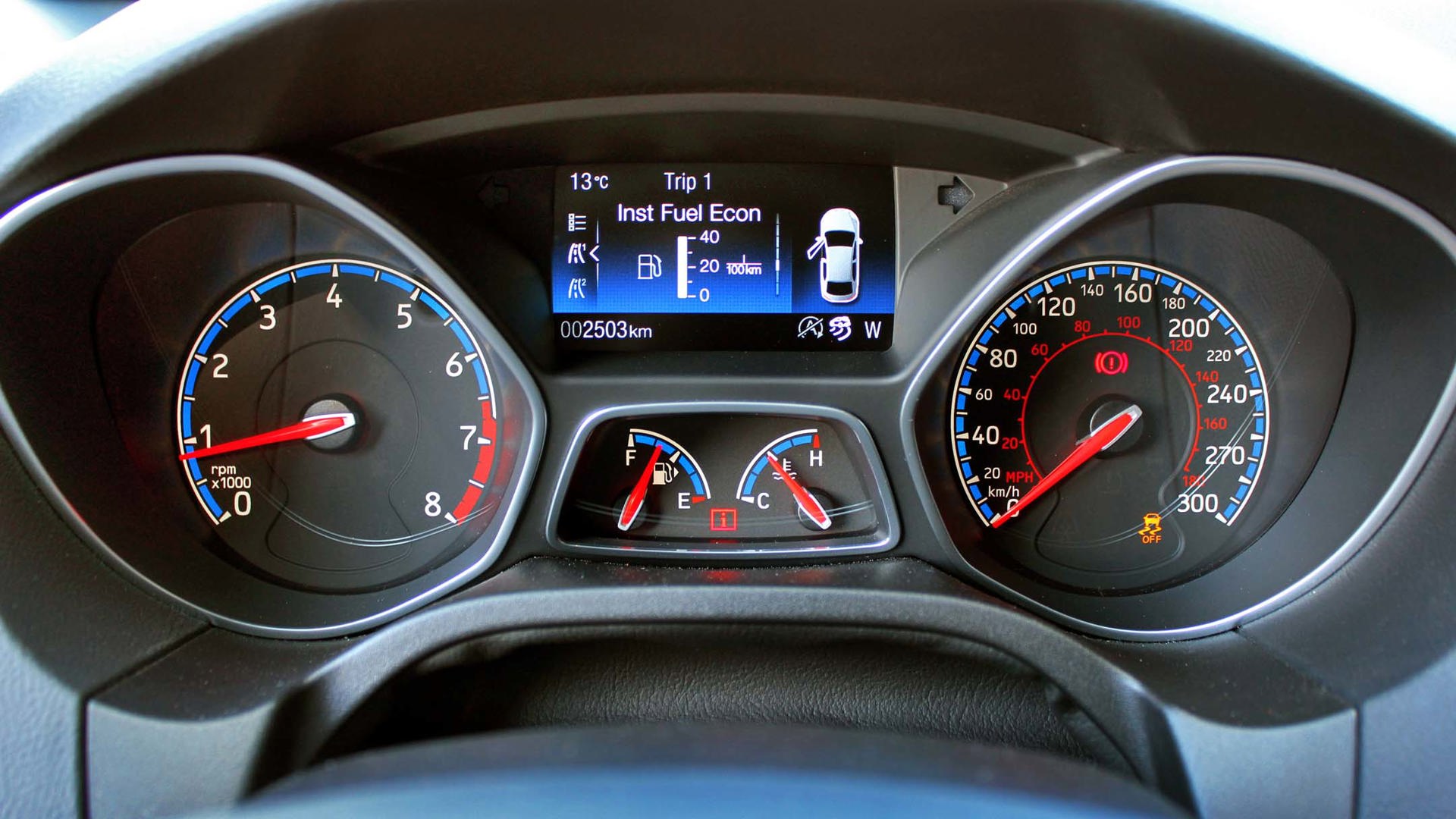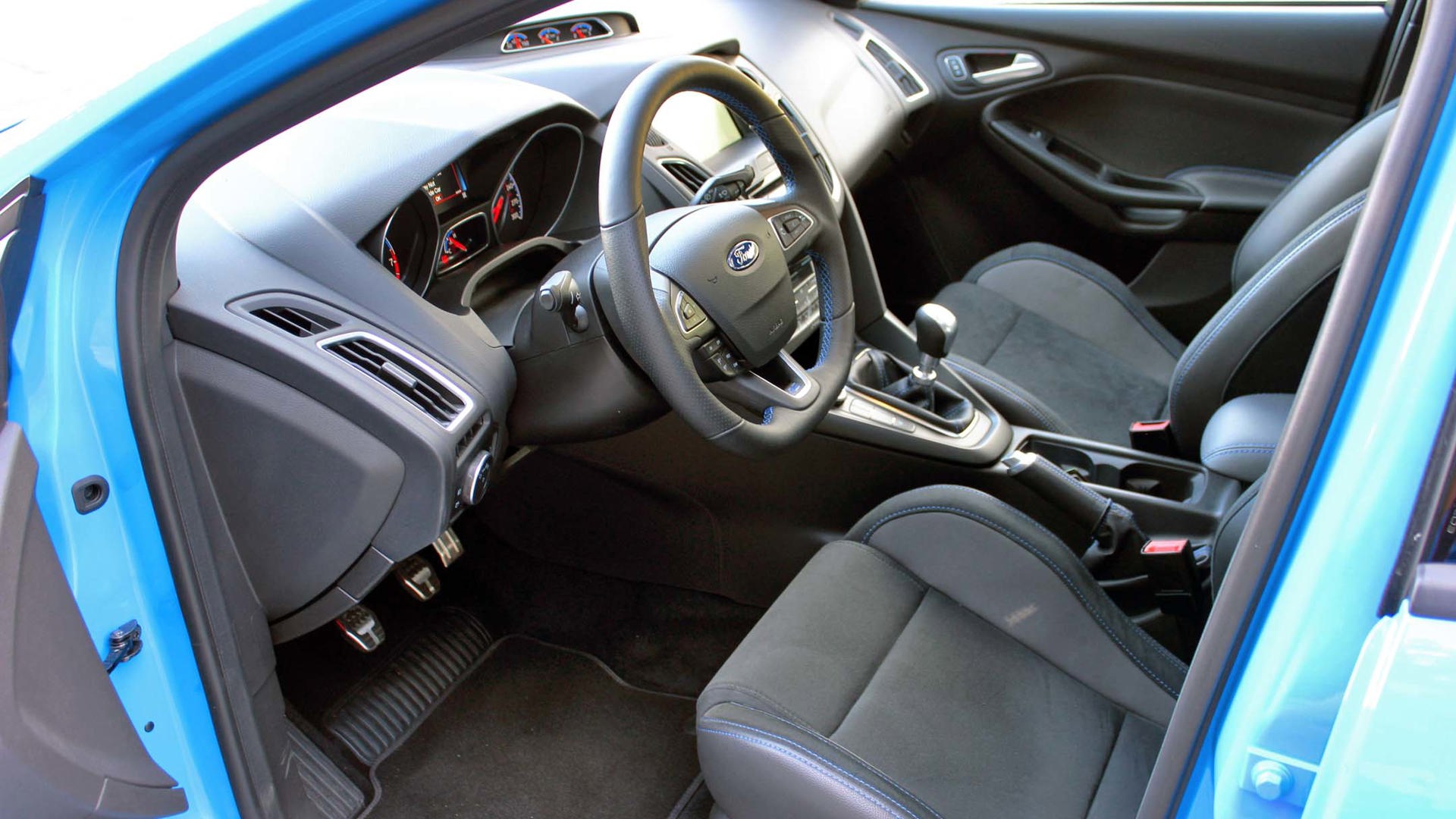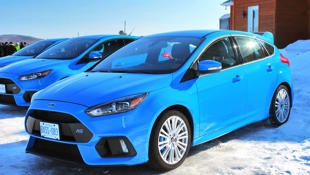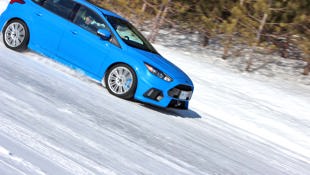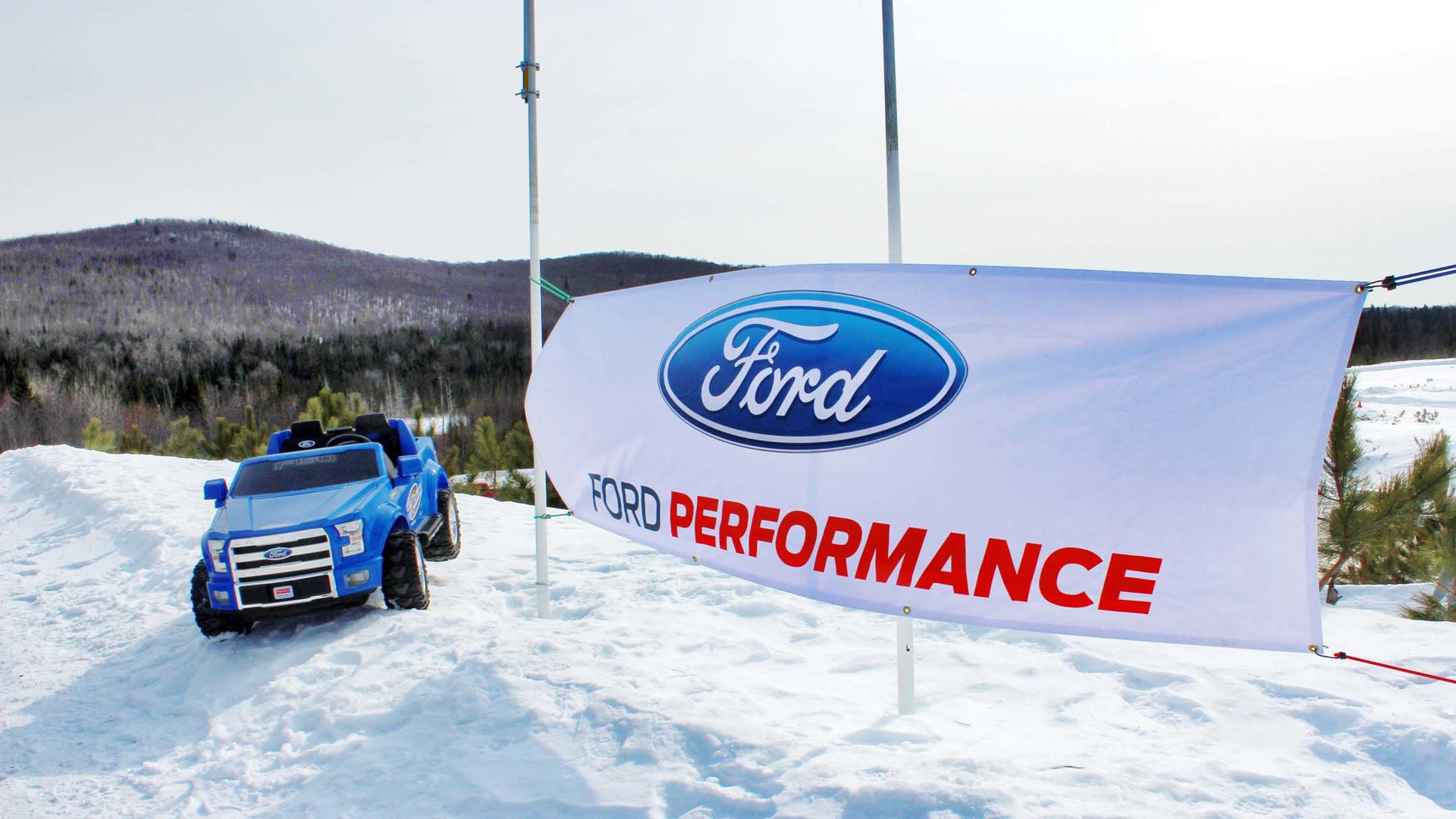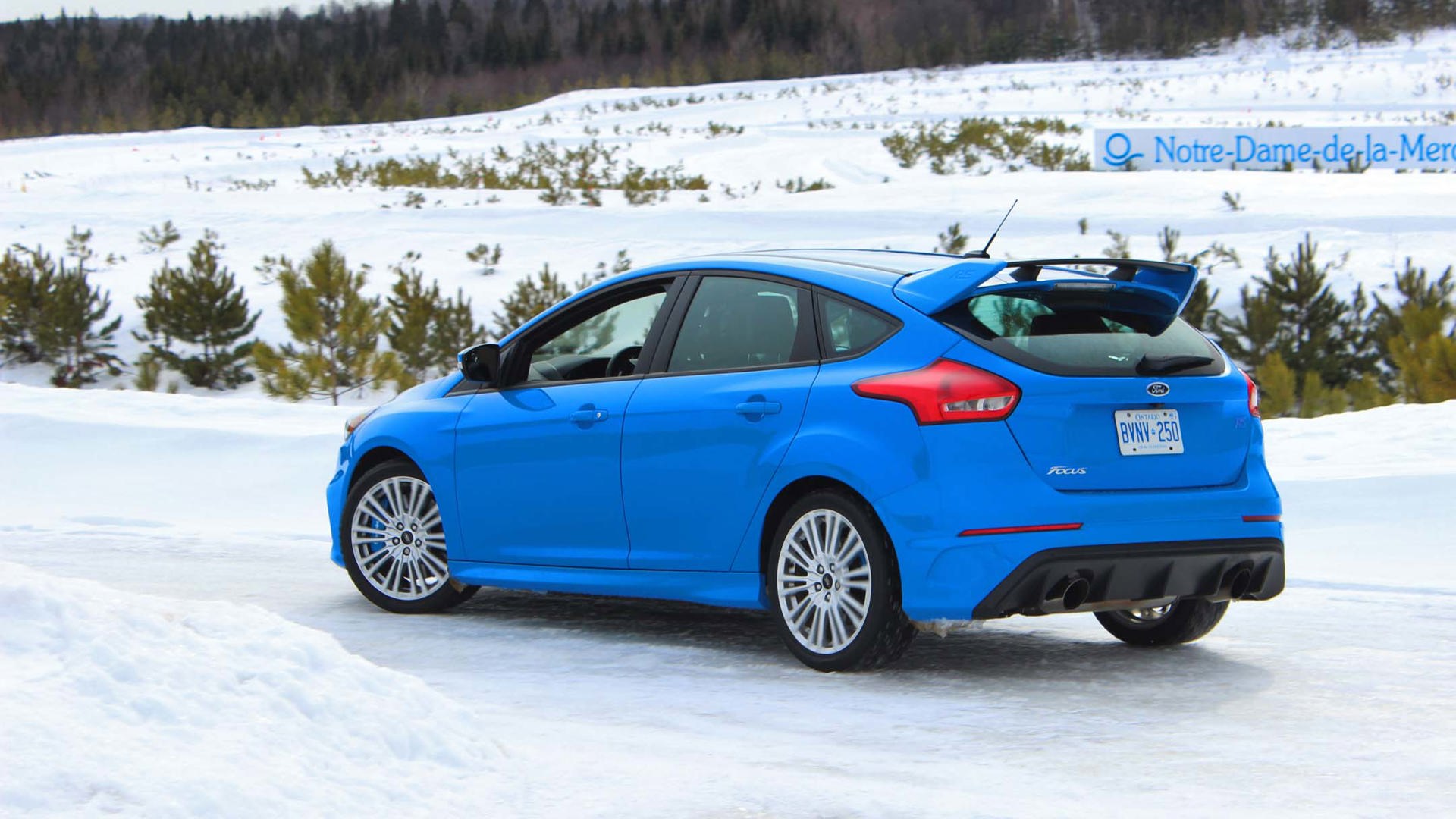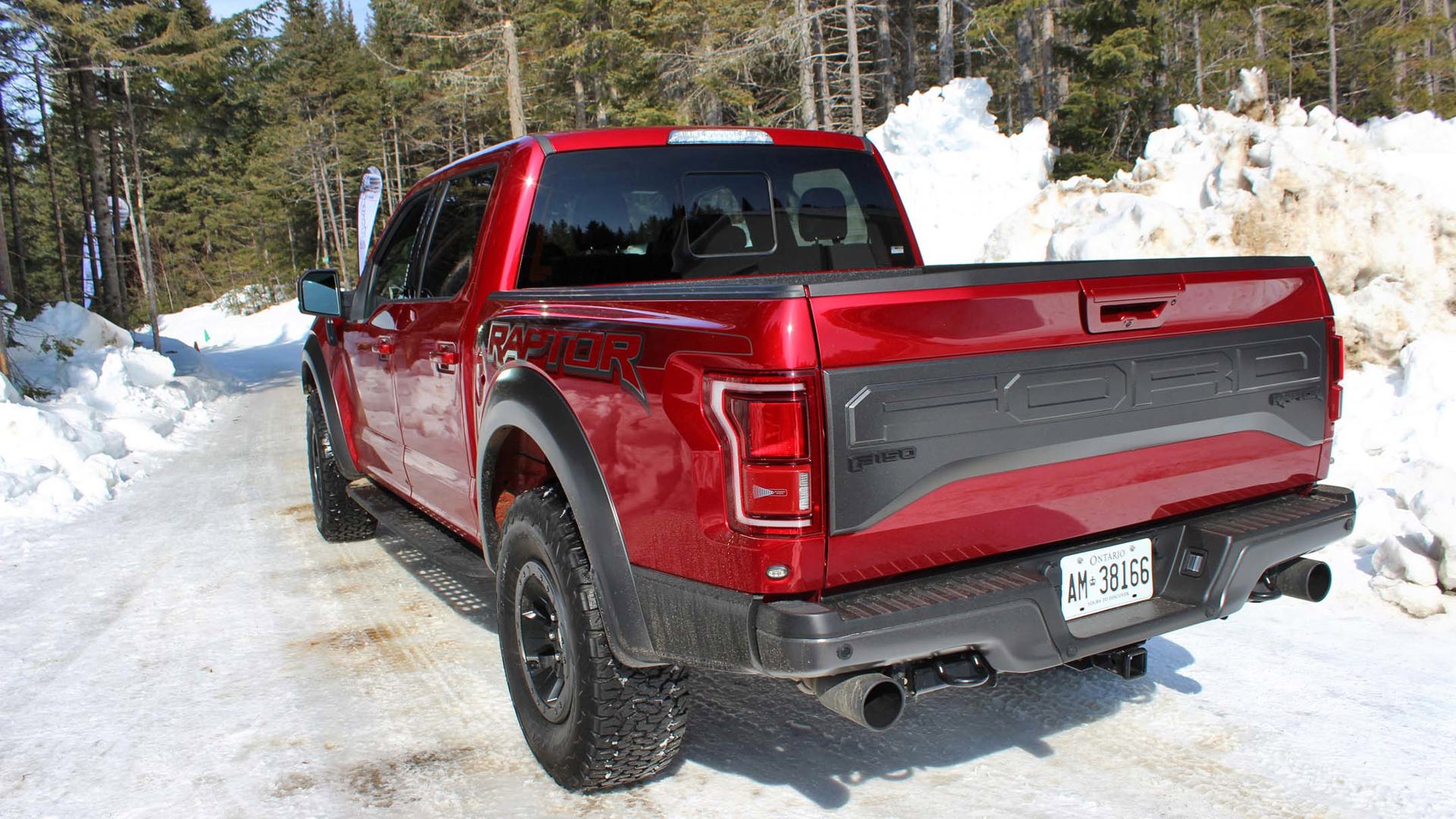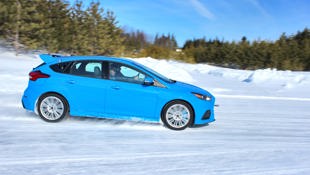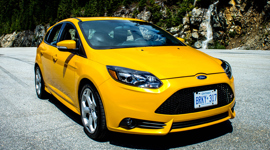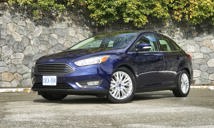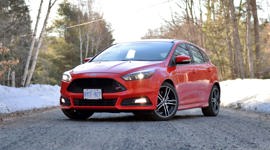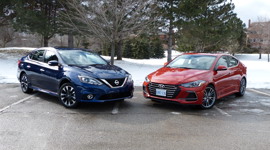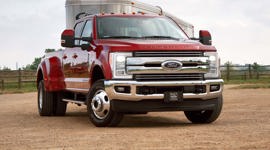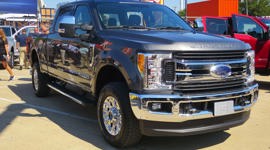Comparison Data
|
2017 Ford F-150 Raptor
|
2017 Ford Focus RS
|
|---|---|
|
Engine Displacement
3.5L
|
2.3L
|
|
Engine Cylinders
V6
|
I4
|
|
Peak Horsepower
450
|
350
|
|
Peak Torque
510
|
350
|
|
Fuel Economy
LOL
|
12.2/9.4/10.9 L/100 km cty/hwy/cmb
|
|
Cargo Space
N/A
|
562.2/1240.3L
|
|
Base Price
$68,399
|
$48,418
|
|
A/C Tax
$100
|
$100
|
|
Destination Fee
$1,700
|
$1,650
|
|
Price as Tested
$70,199
|
$50,168
|
|
Optional Equipment
None
|
None
|
We’d driven it on a highway whose bends made it much more suitable for a sports car than a hopped-up muscle truck. We’d driven it on sand so deep you’d risk sinking in if you stopped. We’d driven it up rocky embankments so slick with red dust they would probably work on the set as a substitute for Mars. Considering their proximity to Hollywood, they may just have been. We’d driven it at over 100 miles per hour on a retired bomb range; you could still see the shrapnel.
Which Ford is best fit for some winter fun?
The one thing we hadn’t done at the launch of the 2017 Ford F-150 Raptor, however, was give it the beans in the most Canadian of clichés: a snowy, un-plowed road. Luckily for us, Ford is very proud of their new baby and were kind enough to dispatch us to central Quebec to give it a try.
In fact, they did us one better than that: In order to show what opposite ends of the fast Ford spectrum are like in the snow, they also tossed us the keys to a Ford Focus RS, which we’d put through its paces on the snow-covered Mecaglisse racetrack.
The question is: which Ford is best fit for some winter fun?
2017 Ford F-150 Raptor
On the surface – as in, if you were just looking at the two, side-by-side, without knowing the Focus’ rally-bred creds, the answer is obvious. The Raptor, with its knobby Bridgestone KO2 tires that have been tailored specifically for the truck, bright blue 33 inch Fox dampers and body cutaways, is the clear winner. It almost looks like this thing is made to plow through the white stuff, liquefying with its AWD and 510 lb-ft of torque. The Raptor didn’t even need studs for the event as did the Focus, so capable is its powertrain.
A big part of its capability boils down to the drive modes on offer, but we’d be spending most of our time in “Normal” and “Mud/Sand” modes as they offer the best mix of traction and performance in these conditions.
They will modify everything from the traction control system to the throttle delivery; upgrade to “Baja” mode, and the traction control gets automatically switched off, though it will come back on if things get too squirrely. That still not hardcore enough for you? TCS can also be switched off completely by the operator, allowing for even more tail-out madness.
Which may sound strange considering we’re talking about a pickup truck, here, but it doesn’t take long behind the wheel of one in these conditions to see that it isn’t strange at all.
At the outset, forward progress is surprisingly stable and easy on the arms; the wider track coupled with those tires is a confidence-inspiring setup. As we chronicled in our original first drive it can make for some nervous highway habits, but that’s not what we’re here for, right?
Exactly.
We started off gingerly, but it really doesn’t take long for you to get more comfortable and start pushing things a little harder. By our third run through the makeshift rally stage laid out ahead of us, we had locked out the front differential so were essentially driving a rear-wheel drive truck. When you’ve got 450 EcoBoost horsepower under your right foot and very little over the rear wheels – there’s a reason many pick up owners load up their beds for winter driving, you know – the drift potential is right up there with big V8 muscle cars on tarmac.
More so, in fact; if you go so far as to defeat the TCS, you will find yourself winding on armfuls of opposite lock in quite short order. Be ready for it, and you’re golden; let it catch you off guard, and you’re in for quite the ride.
Keep it in the more restrictive modes, however, and the opposite becomes the case as you will find a little bit of understeer as the electronic nannies gently tap your shoulder by way of cutting throttle input to make sure you keep it on-line. It’s what you’d want when driving on normal roads in these conditions, but it can lead to some slightly clumsy progress on a track such as this.
When you do get it right, though, it is quite a thing to behold both from behind the wheel or watching from the sidelines. A big off-roader like this shouldn’t be able to respond the way it does, but it does and in spades. Thank the fine chassis and suspension tuning, lighter-weight front end thanks to its engine being smaller than previous, and athletic transmission, which throws 10 speeds at you if you want it to. You can lock out gears to suit your comfort level; if you know you’ll be climbing and towing and don’t want the transmission hunting for its upper ranges all the time, simply lock them out, leaving less gears to worry about. If you’re going to be merrily cruising along, then gears 8-10 – which are all essentially overdrive gears, anyway – will make for the most efficient progress.
Us? Well, since the track is a technical one, we left it in manual mode and rarely ventured past fourth gear anyway. The paddles, I should mention, are properly responsive, even sports car–like in their action.
They take the form of nice, big sickles, which is more than what can be said by many of those very sports cars.
So, needless to say: while making our way through the treacherous course would slowly become more familiar allowing us to loosen our grip on the wheel a little, it’s not until you’ve left it in the hands of the pros that you really see what the Raptor is capable of.
It just so happens that we were being hosted by a number of seasoned race and rally car drivers, folks who knew a thing or two about handling a car on a knife’s edge. They’re also familiar with the twists and turns that make up the Mecaglisse facility.
They, of course, would go whole hog; no traction control, rear-wheel drive. With their calm hands on the wheel, the Raptor was free to gamely swing from apex to apex, appearing to juuuust scrape its bumper on the snow bank before a dose of oppo was administered, and those big tires found their purchase, swinging it back around the other way.
2017 Ford Focus RS
We were put on an entirely different track for this, albeit one that ended up being a little smaller than planned. An unseasonable lack of snow meant the tarmac was showing through in some spots, and you can understand that Mecaglisse management didn’t want a bunch of slidey AWD hot hatches with studded tires tearing up their prized tarmac.
No matter; what we had was plenty to get a feel for what this little hatch is capable of, all AWD, turbocharger and manual transmission of it.
Like the Raptor, however, we’d never stray much past second gear during our run; you simply don’t need a blast of speed when the technicalities of a course are such that finding a way to perfectly drift that low-speed hairpin is the goal, as opposed to hitting v-max on a straight.
Not that the Focus doesn’t impress with its speed off the line and in-gear; 350 hp and 350 lb-ft of torque – more in both departments than the Subaru WRX STI or Volkswagen Golf R (and, as it happens, more than the Mustang it shares its engine with thanks to having a larger turbo compressor wheel) – will do that, especially when fed through all four wheels.
As a result, we’d end up arriving at the track’s first turn – a decreasing radius left – at a pretty high speed, even though we’d just been through a slalom exercise. You’d think we’d be spending a lot of time in the snowbanks after panicking on a steering over-correction, or perhaps locking the front under too much braking and snowplowing our way many meters past the apex.
That’s simply wasn’t the case. Like the Raptor, much of how controllable the RS was is owed to its studded tires (we Canadians get both summer performance and winter tires as standard), but that AWD system is a fantastic one.
You can feel as the power is shuffled from wheel to wheel – up to 70 percent of torque can be sent to the rear axle, and all of that to a single wheel – as the computers read what’s going on beneath you 100 times a second. You can feel as it scrambles to make sure it gives you what you need to keep things on the straight and narrow.
By the second lap of our test, we activated “Drift” mode (that relaxes your TCS and STM intervention) and started to drive harder, diving into each apex and feeling the rear end step out a little more, a little more, a little more…the whole while confident that we had a state-of-the-art AWD system beneath us, helping us at least feel like the rally stars we thought we were beginning to look like.
It got to the point where I wasn’t even thinking about the grip I had or didn’t have; I just focused on my steering and throttle inputs, flowing with the motion of the track as I managed to first perfectly clip a turn, then manage to string a set of drifts together that I was sure would be getting me top scores at any number of the competitive drift events that happen around the globe. I was probably giving myself too much credit, but what does it matter? When a car is putting this much of a smile on your face, you feel on top of the world. You really do.
It’s not all roses, however; I’ve driven the RS a number of times, and every time I’m reminded about how the seating position just isn’t quite right. The as-standard Recaro racing buckets are supportive, but they’re angled at such a way that the steering wheel never quite falls correctly into my hands. It telescopes, but that’s not the problem; the angle of the rim just isn’t quite right if you have to move the seat back as I do. It could also be smaller.
In this circumstance, however, that’s really my main complaint. That, and the price; with a base MSRP of $48,148 in Canada, buyers are really going to have to tap into their boy racer instincts, or their wannabe rally-star dreams. Do that, and the Focus RS provides some of the most rewarding and satisfying driving, especially when on the snow.
And the winner is…
The Raptor must be lauded for just how very well it managed to shake off its pickup truck digs and really give you the impression that you’re driving a more sporting vehicle. Albeit one that is a little jacked up and hulking, but a sportier vehicle nonetheless. I do have to say, however, that the way it crushes long off-road distances and insane speeds was more satisfying than squeezing it on the narrow Mecaglisse ribbon. There’s a reason the Raptor has a Baja mode, and it’s no surprise to learn that it competed in the actual Baja 1,000 race with almost no modifications.
So, if you were to unlock the gates to this particular track, revealing two performance Fords on the other side and you were only able to pick one, it’s an easy choice assuming you knew what you were stepping into. There’s no question that the Raptor’s hulking presence would very likely sway the uninitiated, it’s just that spectacular. After driving both I know which one I’d choose. When I got out of the Raptor, I was thrilled, but I felt like I’d kind of gotten the gist of it.
When I got out of the Focus RS, all I wanted to do was jump back in and give it the beans just one more time.
It’d be the RS for me in a heartbeat.
